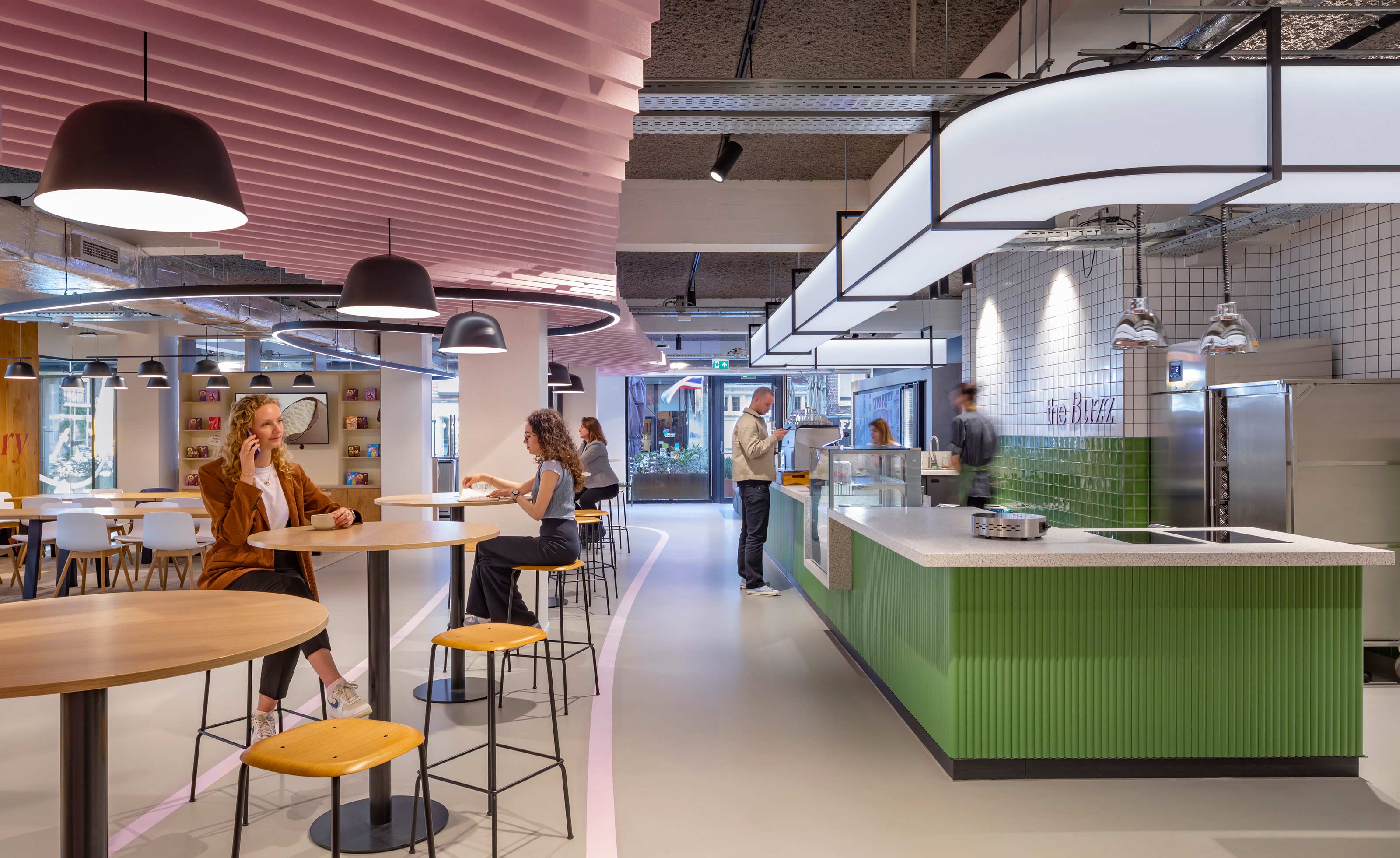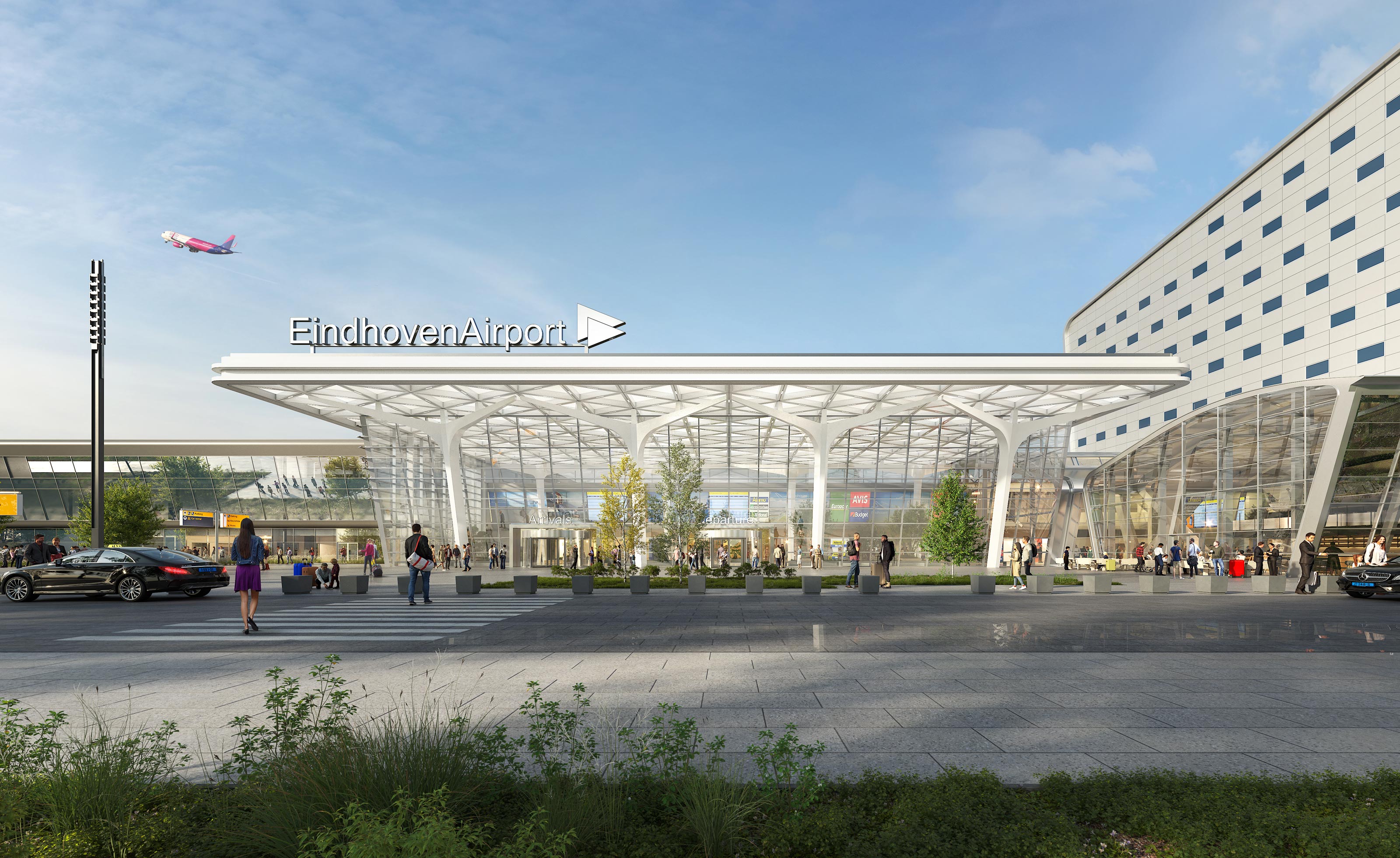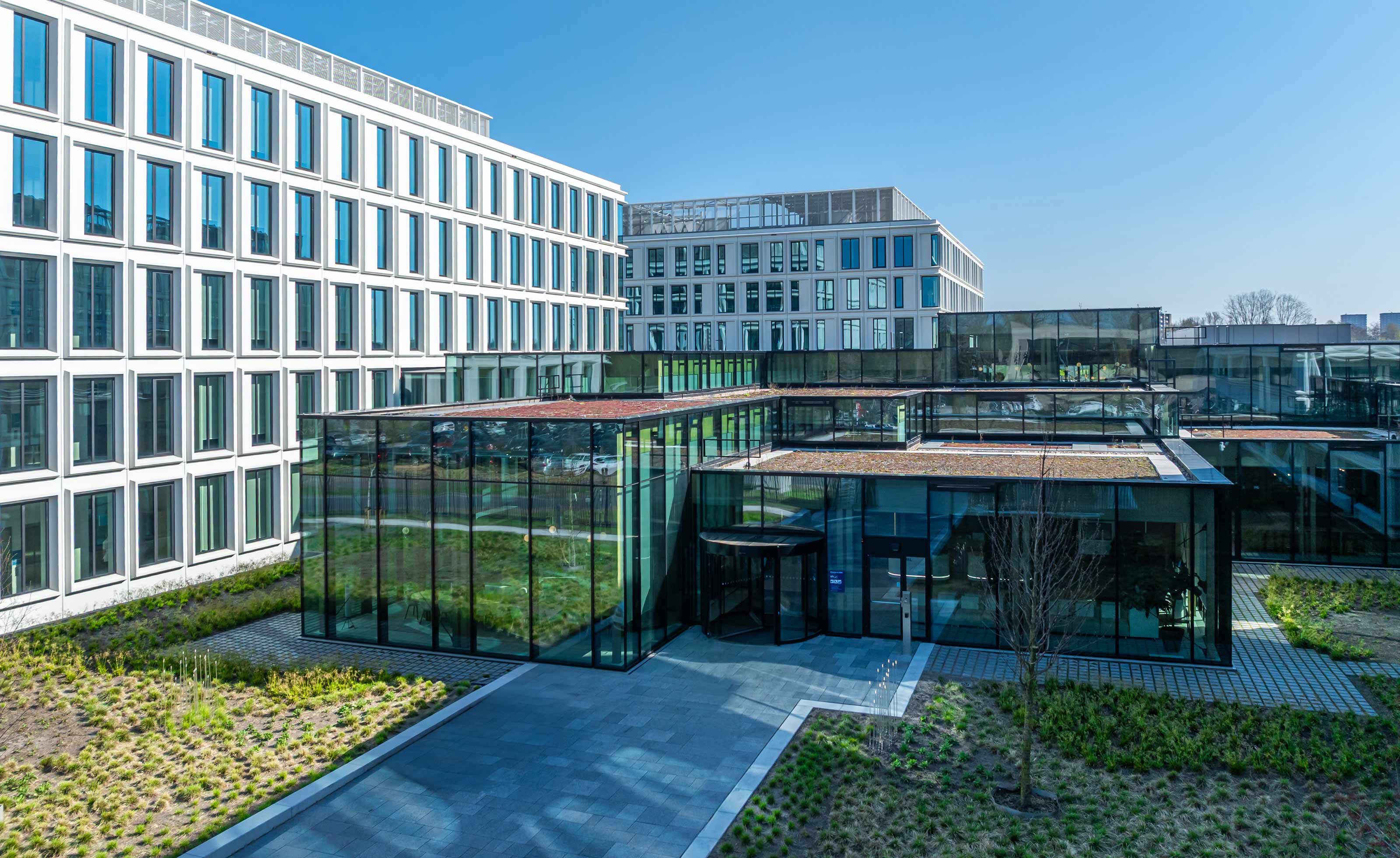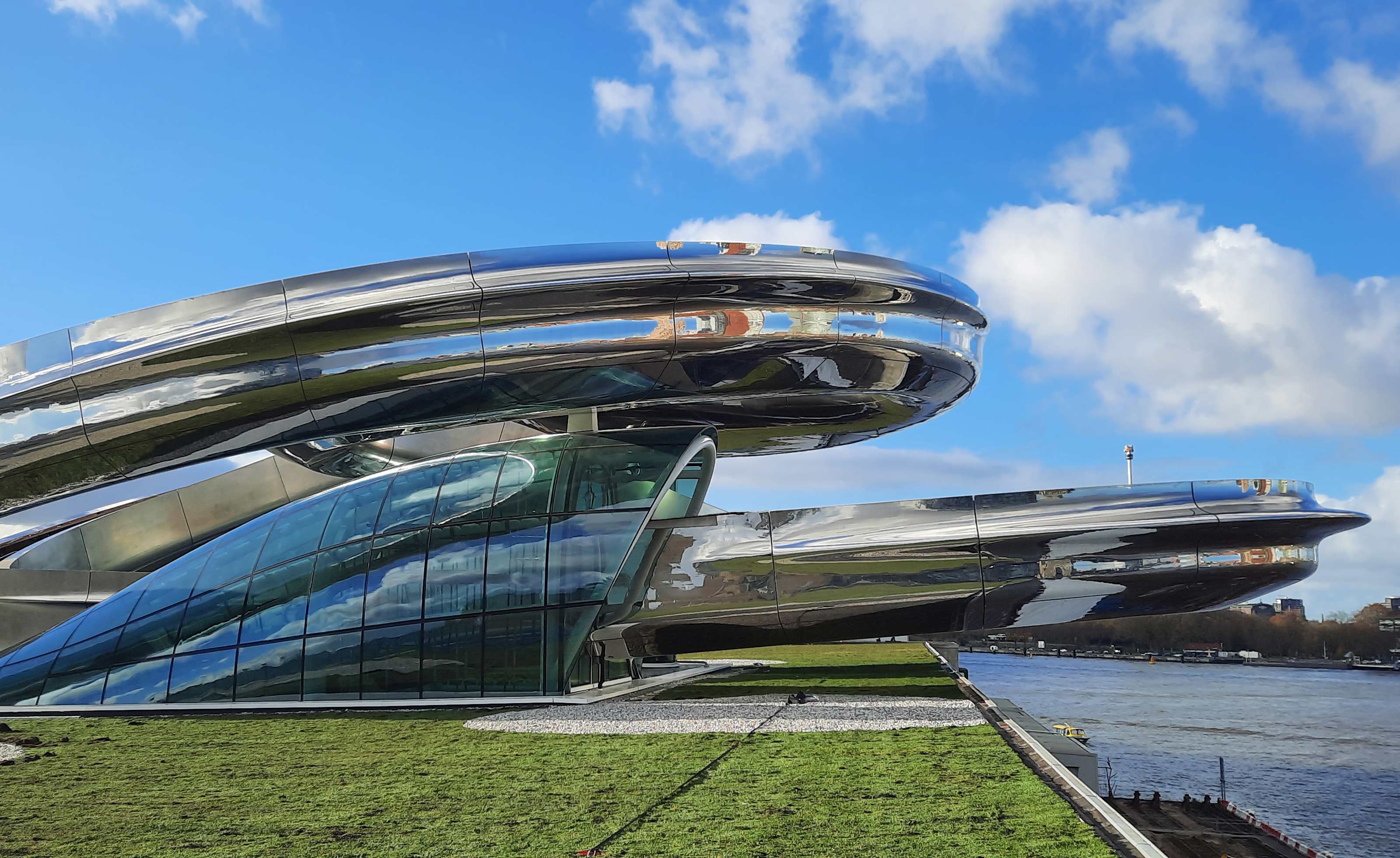EGM architects at a glance
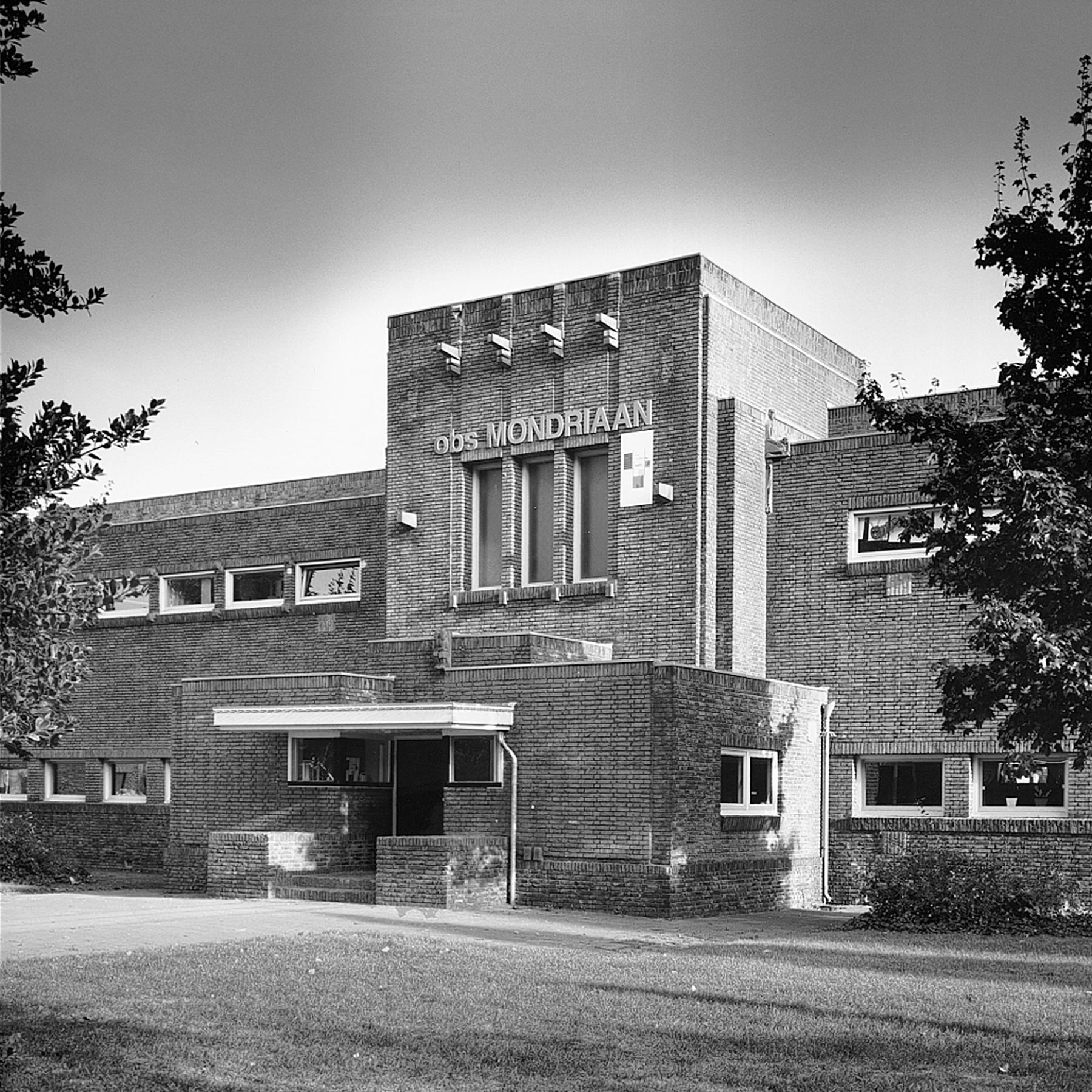 i
i
A building typical of its time with a powerful, almost stately appearance. The school has a walled front garden that serves as a playground and a buffer between the street and the classrooms. Various works of sculpture are incorporated into the facades. (Gerrit Gerritse)
Public primary school, Dordrecht
1929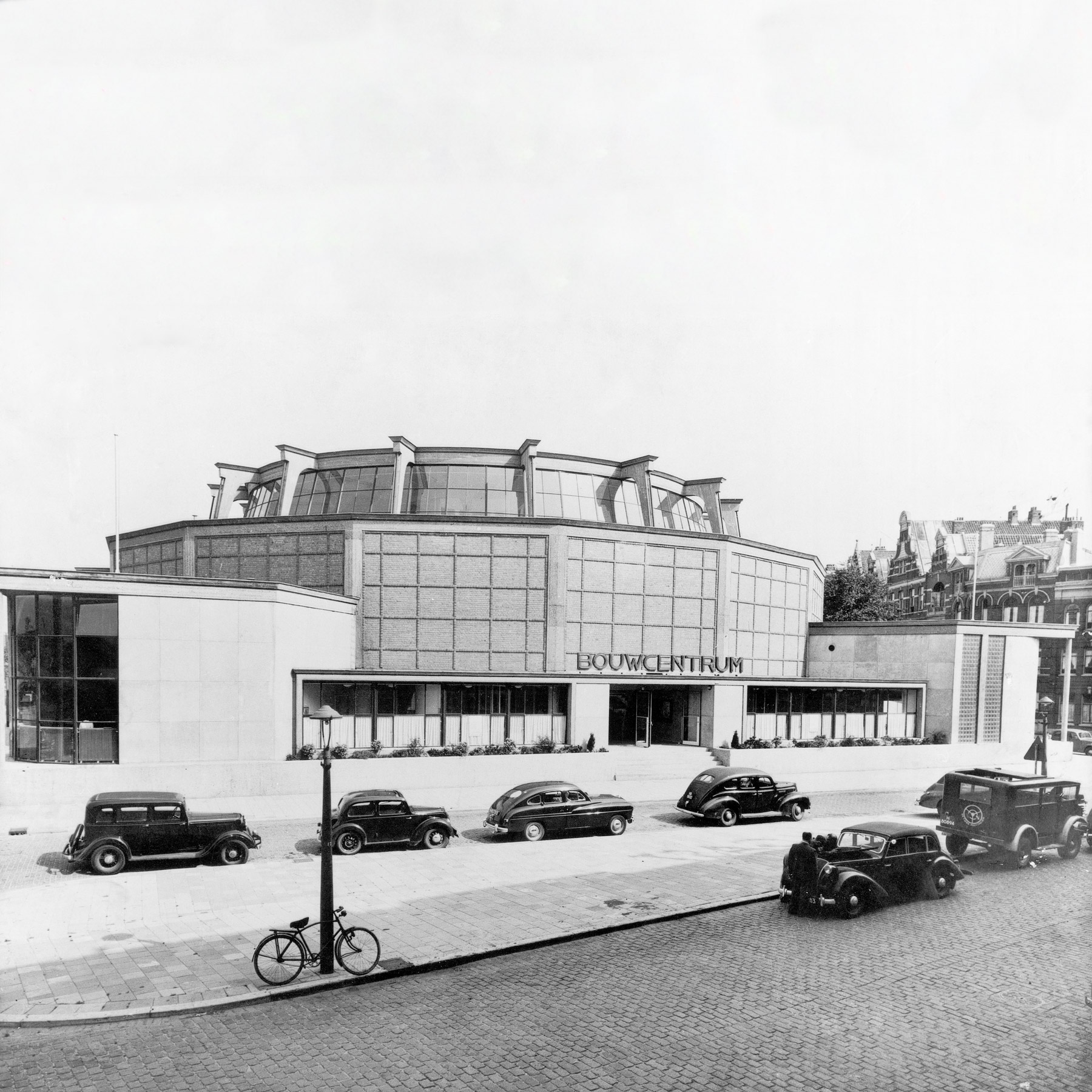 i
i
The Building Centre is a centre of expertise and exhibitions that showcases innovation in the construction sector in a revolutionary manner. It is one of the biggest architectural ensembles in the centre of Rotterdam. The exterior wall features a unique brickwork relief by the artist Henry Moore. (1947-1967, Joost Boks, Wout Eijkelenboom, Bram Middelhoek)
Building Centre, Rotterdam
1947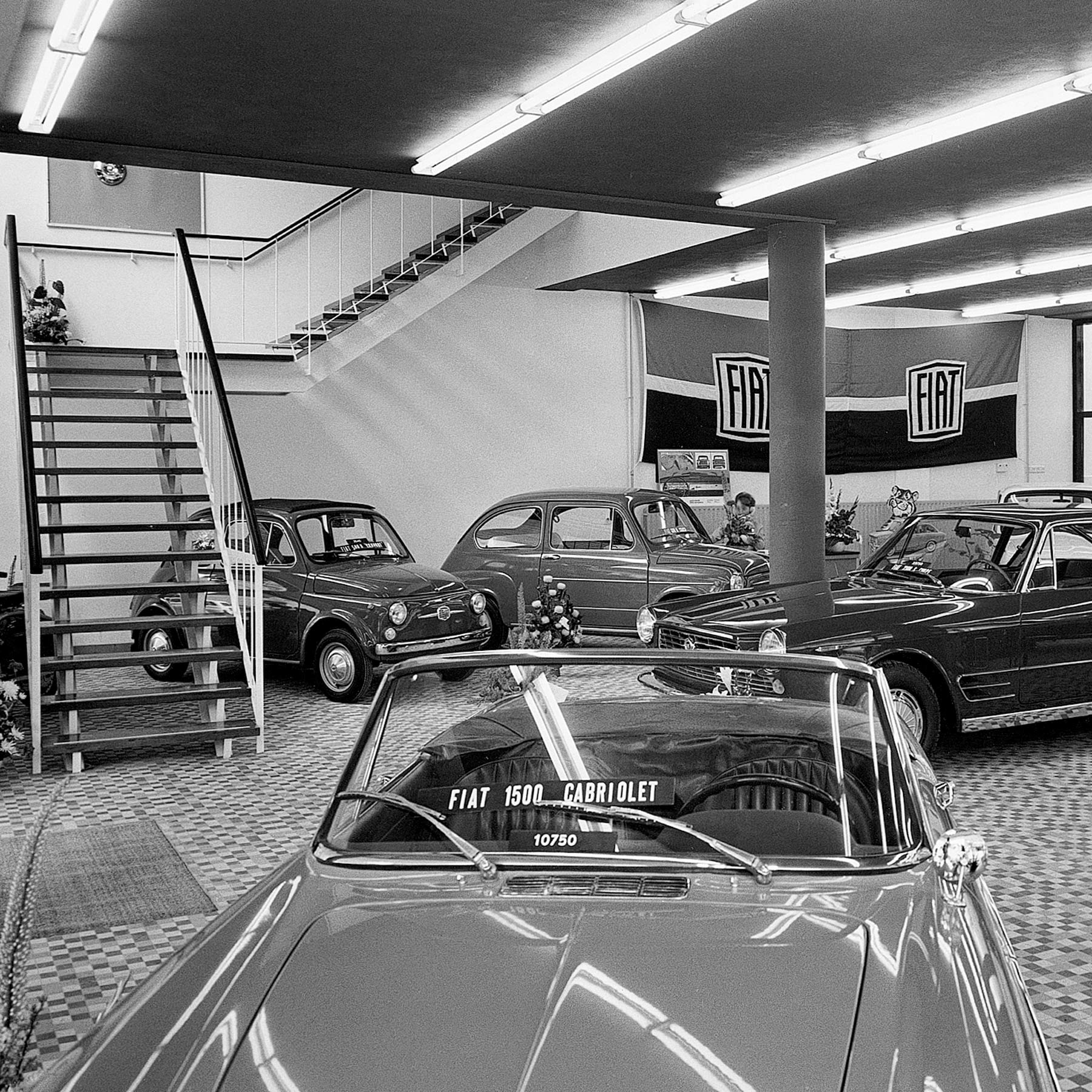 i
i
A modern garage in the centre of Dordrecht with a remarkable combination of workshop and showroom downstairs, and accommodation for mechanics and managers upstairs. The horizontal bands of the corner building align well with the urban context. (Hans Gerritse)
Fiat car garage, Dordrecht
1961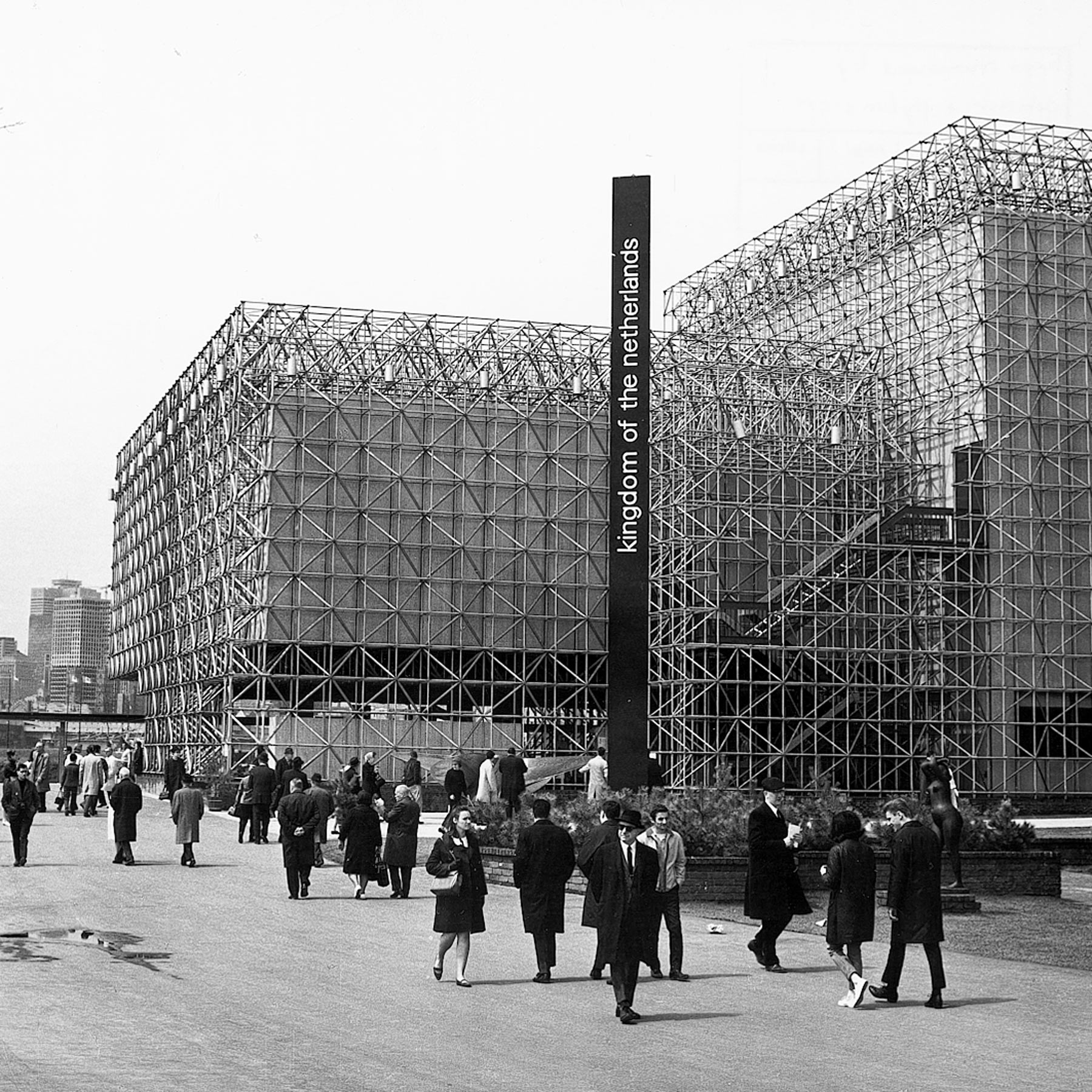 i
i
EXPO ’67, the World Exhibition held in Montreal (Canada), showcases industrial progress. That is expressed by the architecture of the Dutch pavilion with its innovative aluminium ‘space frame’. Manufactured industrially, it can be completely disassembled and reused. The design earns the Reynolds Award from the American Institute of Architects. (Wout Eijkelenboom & Bram Middelhoek)
Dutch pavilion, World Exhibition, Canada
1967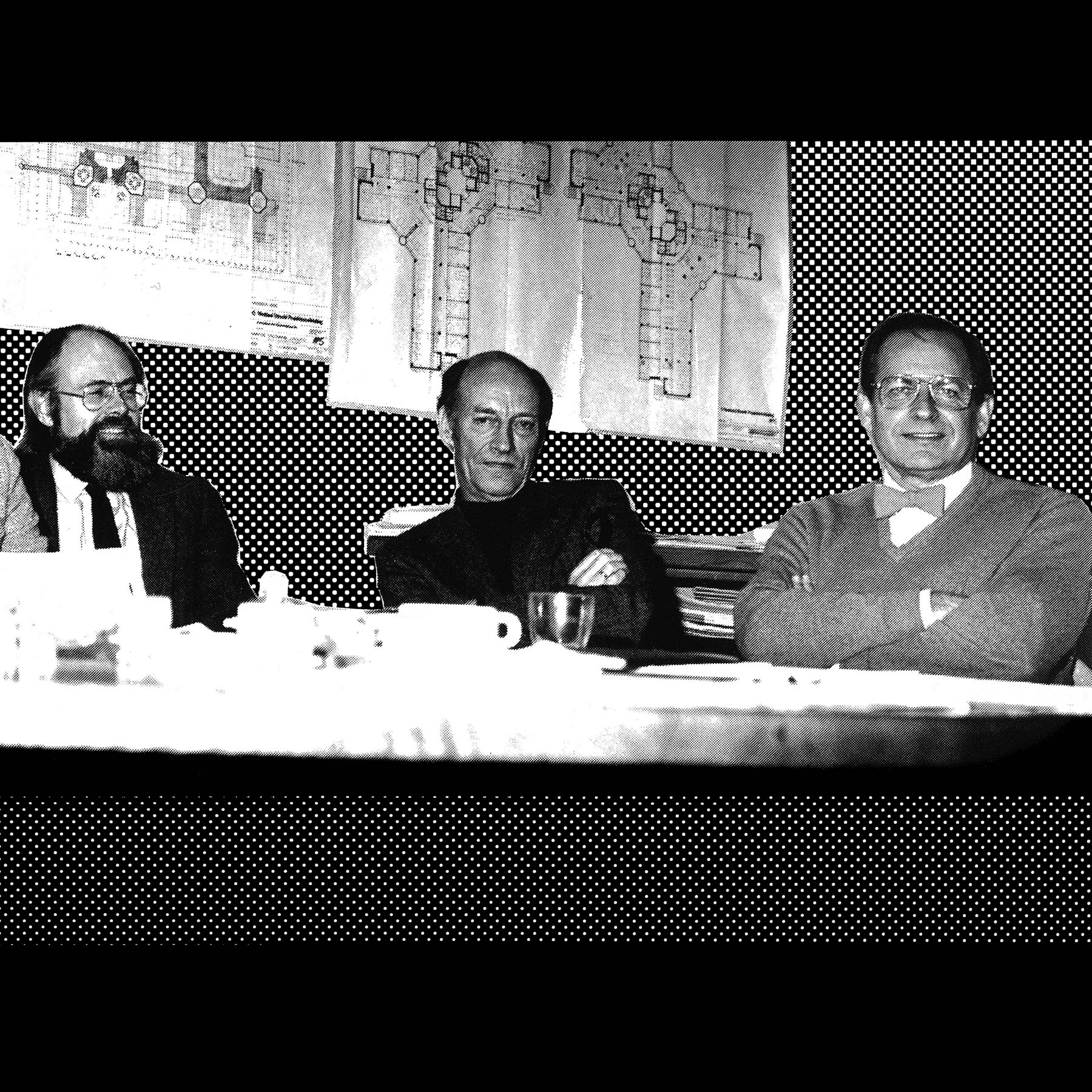 i
i
The offices of Gerrit Gerritse (Dordrecht) and Wout Eijkelenboom & Bram Middelhoek (Rotterdam) merge to become EGM architects. They share their passion for and knowledge of the healthcare sector. The new office brings together engineers skilled in project work with architects who are innovative and pioneering to form a professional, creative architecture firm.
EGM architects
1974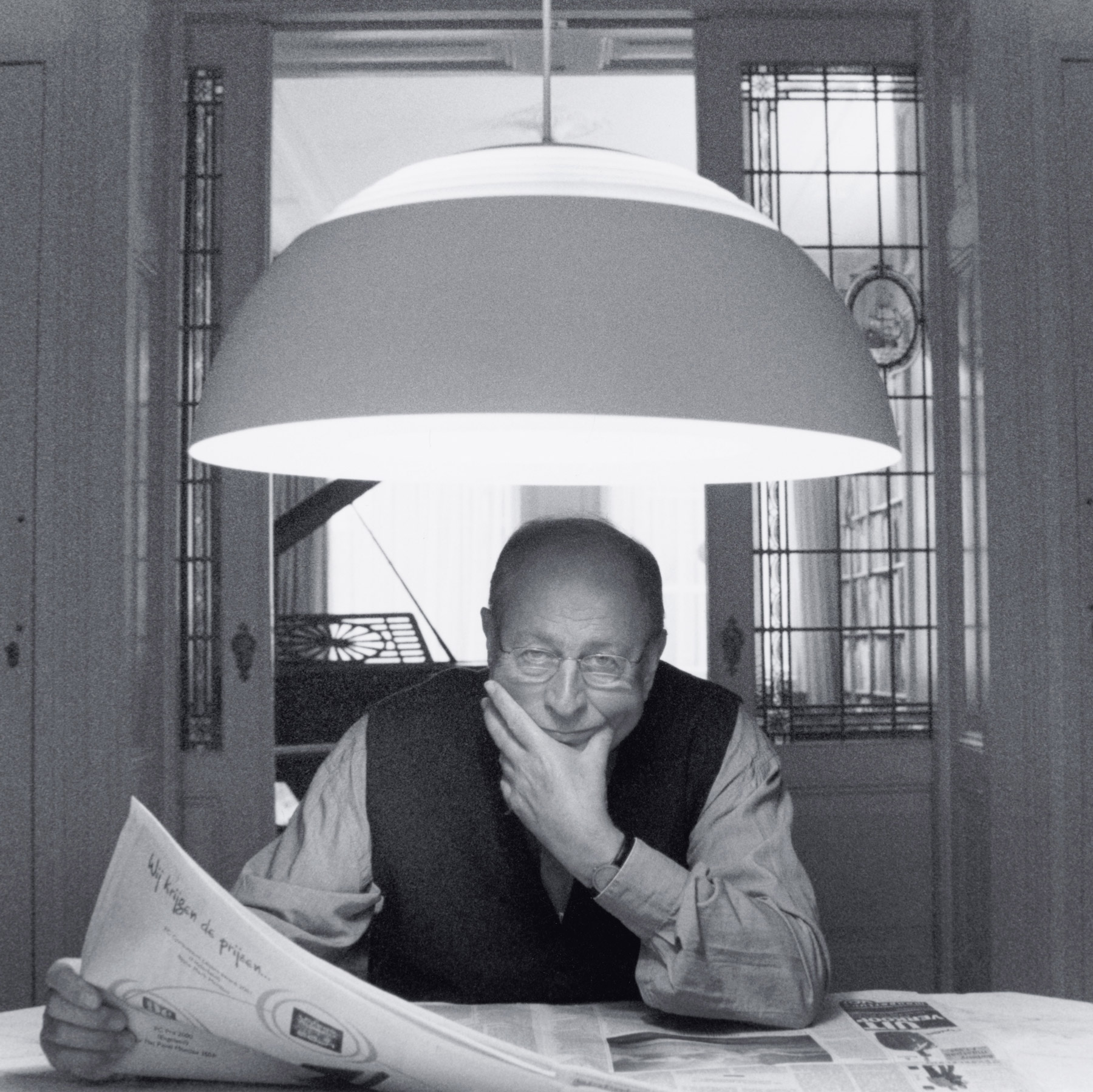 i
i
Eindhoven University of Technology appoints Wout Eijkelenboom as an endowed professor of architectural and urban design. He fulfils this position with great enthusiasm until 1989. Sharing knowledge and showing students the ropes in the profession suits him and the office. Some students join the office and remain there.
Wout Eijkelenboom, professor at TU Eindhoven
1975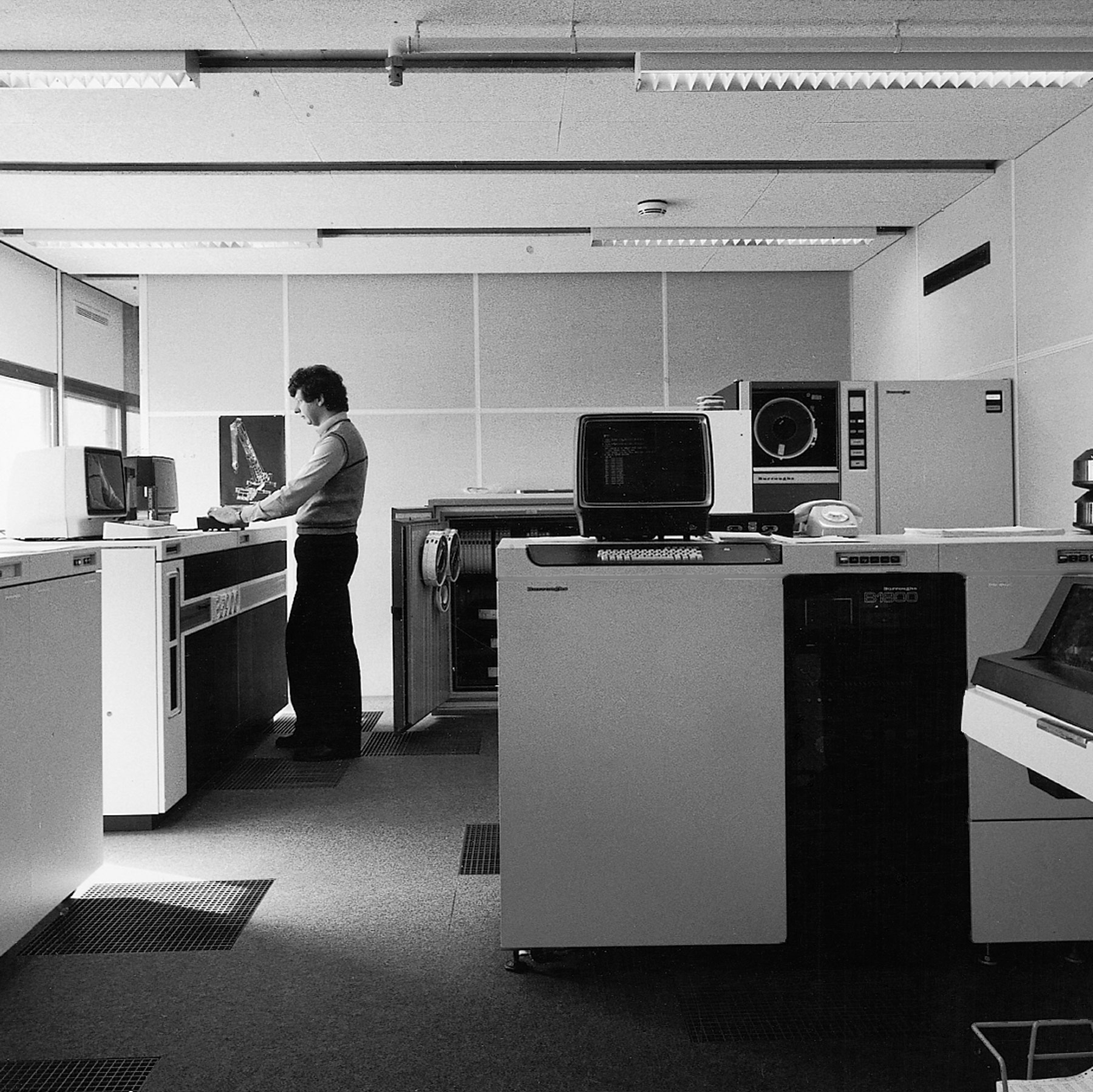 i
i
The office rapidly professionalizes. Financial administration, project costs and time sheets become fully automated with the purchase of the B 731. EGM develops the software for the mainframe independently in house. In 1982 the B 5900 comes on the scene: a high-tech room-filling computer that also supports design work.
Purchase of Burroughs B 731
1975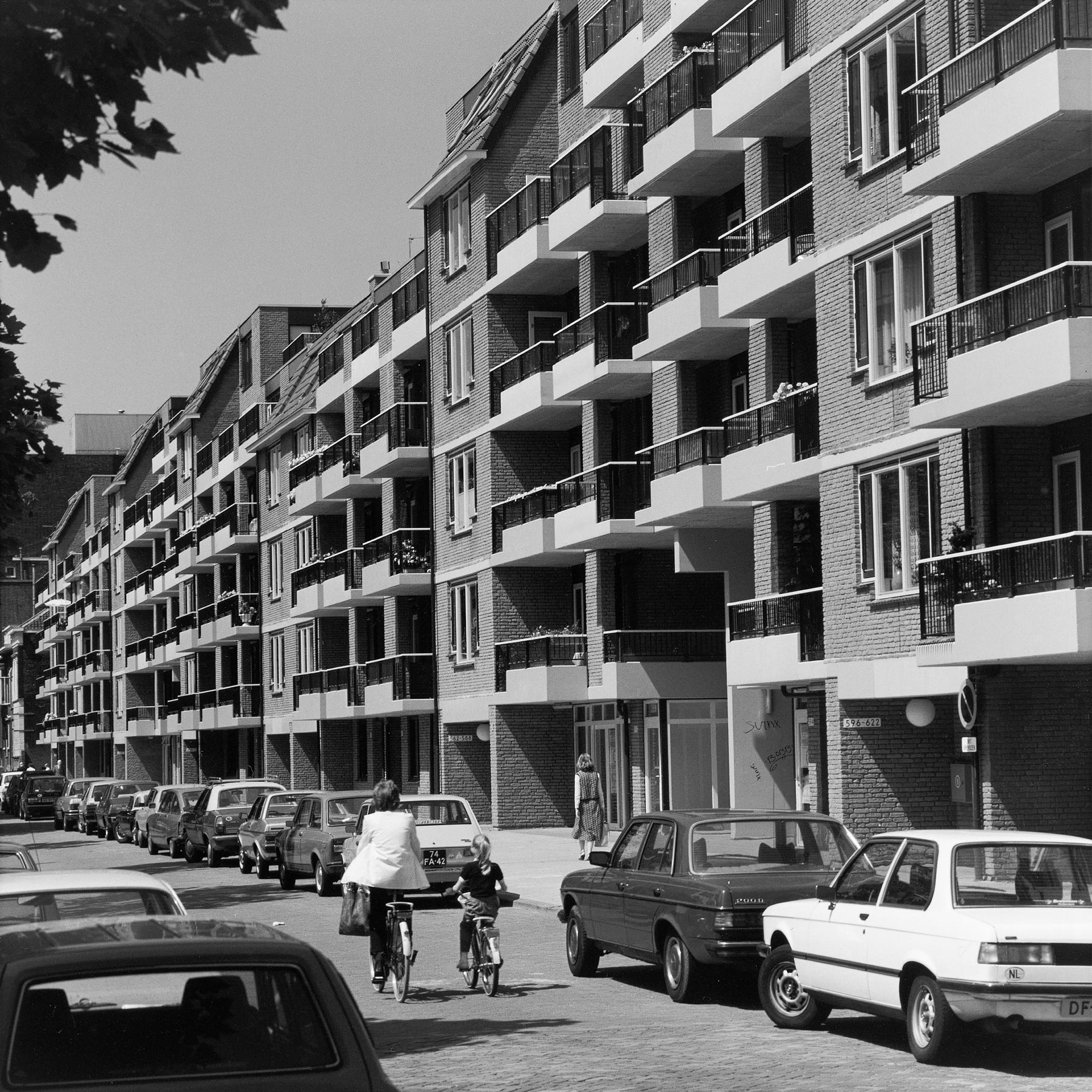 i
i
The residential building contains a mixture of functions, with 300 apartments, paramedical treatment rooms and shops. That makes it of great social value for the community. The building experiments with ‘central living’: multiple homes connected with one another by a communal space. A split-level zone serves as a transition between shared and private areas.
Residential building, Rotterdam
1975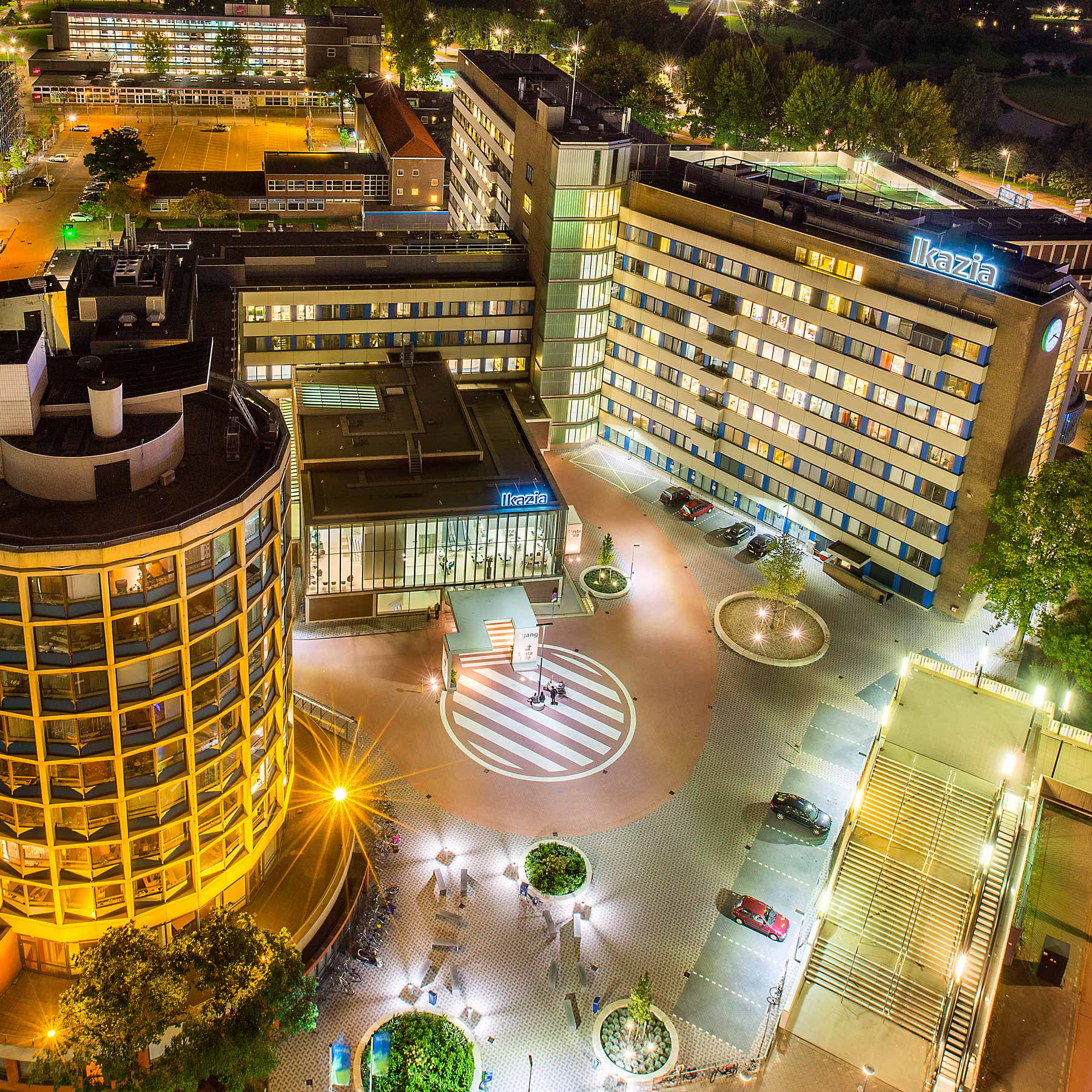 i
i
The collaboration between Ikazia and EGM is the office’s longest and is truly unique. More than 50 designs have been completed since the first commission. Ikazia was once located on the edge of the city but is now hemmed in by shops, schools, businesses and a residential tower. This dynamic urban context calls for a creative approach to each adaption and extension. EGM ensures that the current campus of buildings still looks modern and welcoming. That enables Ikazia to stay true to its core value: running a hospital where everybody feels comfortable and at home.
Ikazia Hospital
1977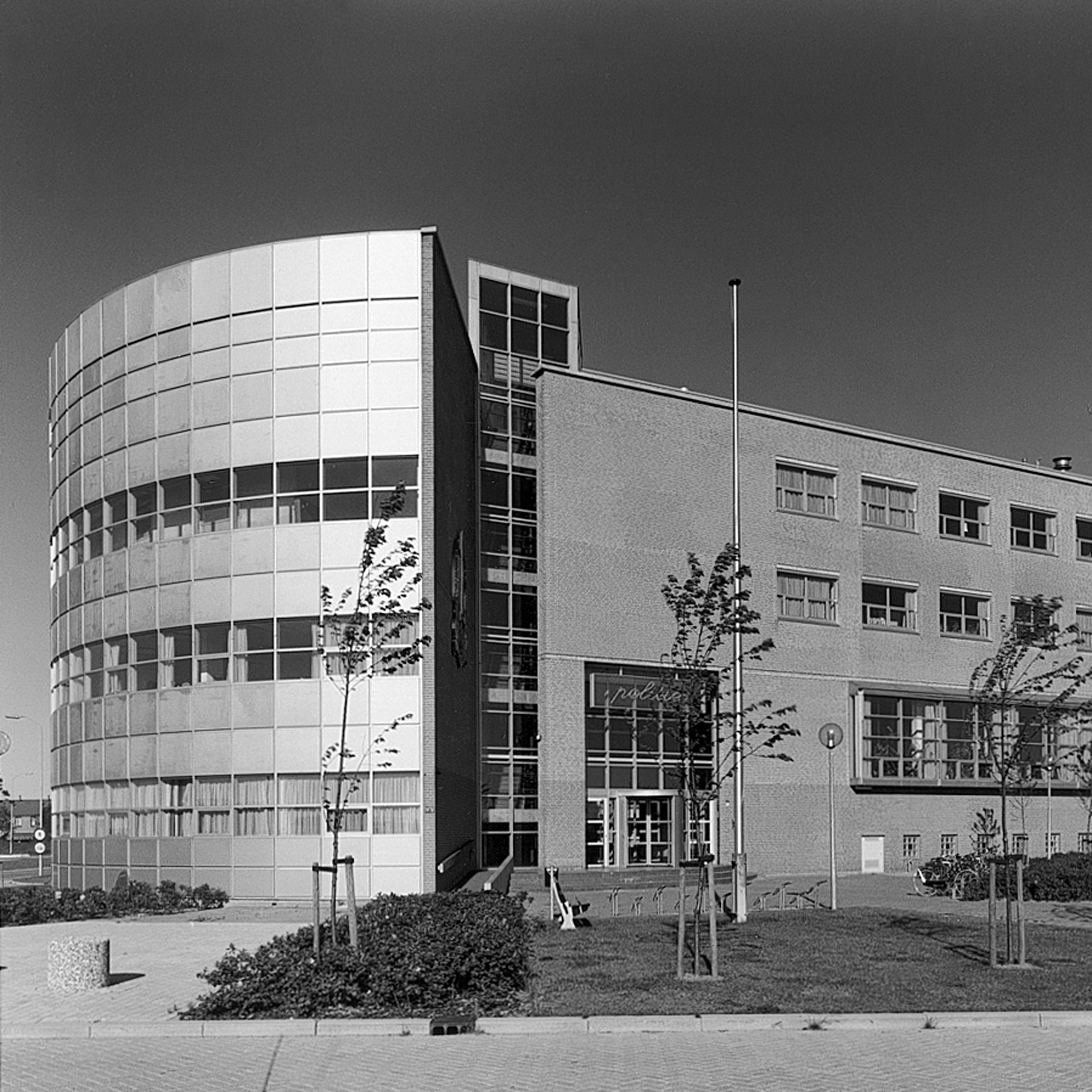 i
i
Conceptually strong design that shows police work – social visibility and enforcement – in a transparent way. This public contract aligns well with the social role increasingly played by EGM.
Police station, Lelystad
1978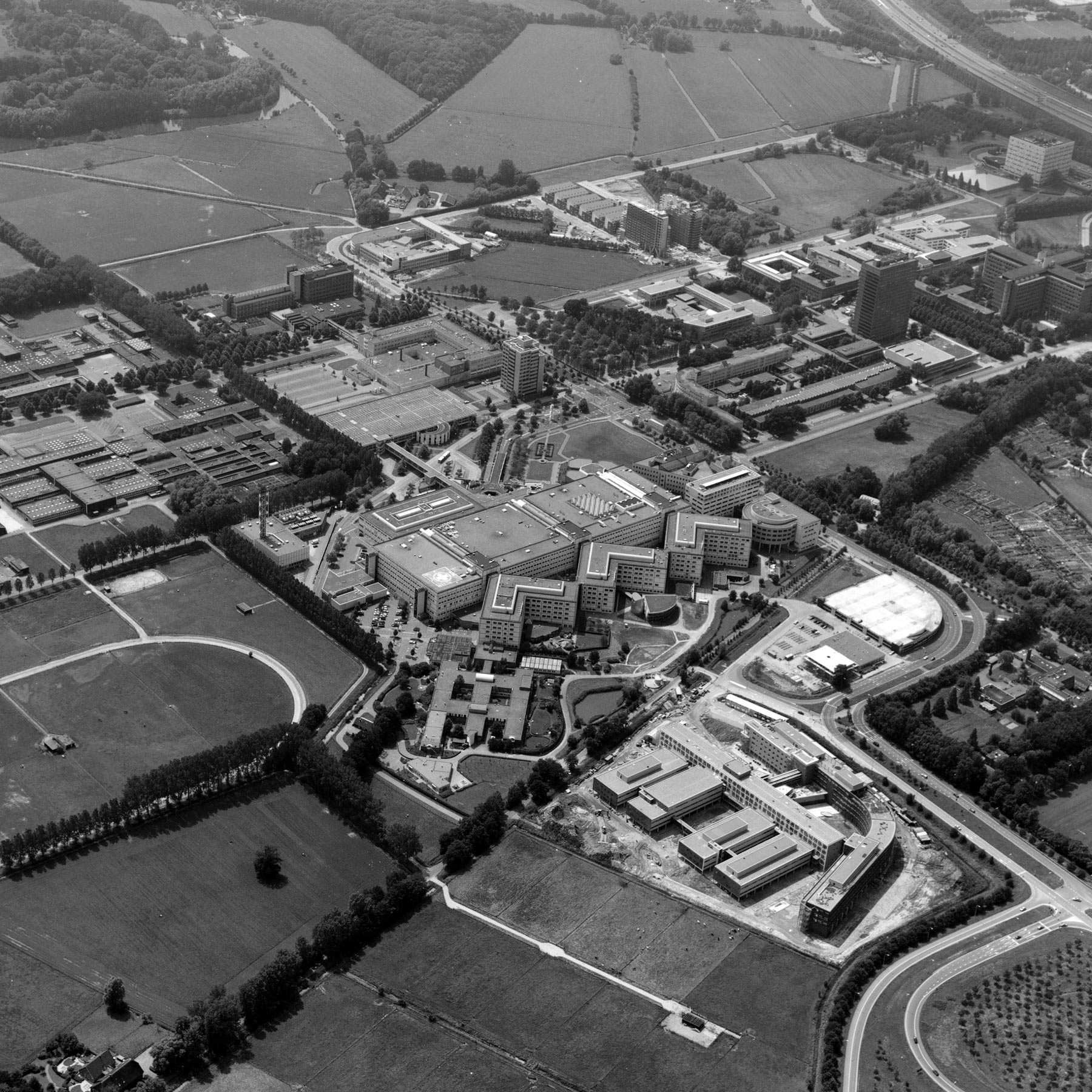 i
i
The Academic Hospital Utrecht (now UMC Utrecht) is the first UMC in the Netherlands and the springboard for the new EGM architects. The office can deploy its knowledge of architecture, building technology and project organization to the full here. The first patient arrives in 1984.
AZU (Academic Hospital Utrecht)
1979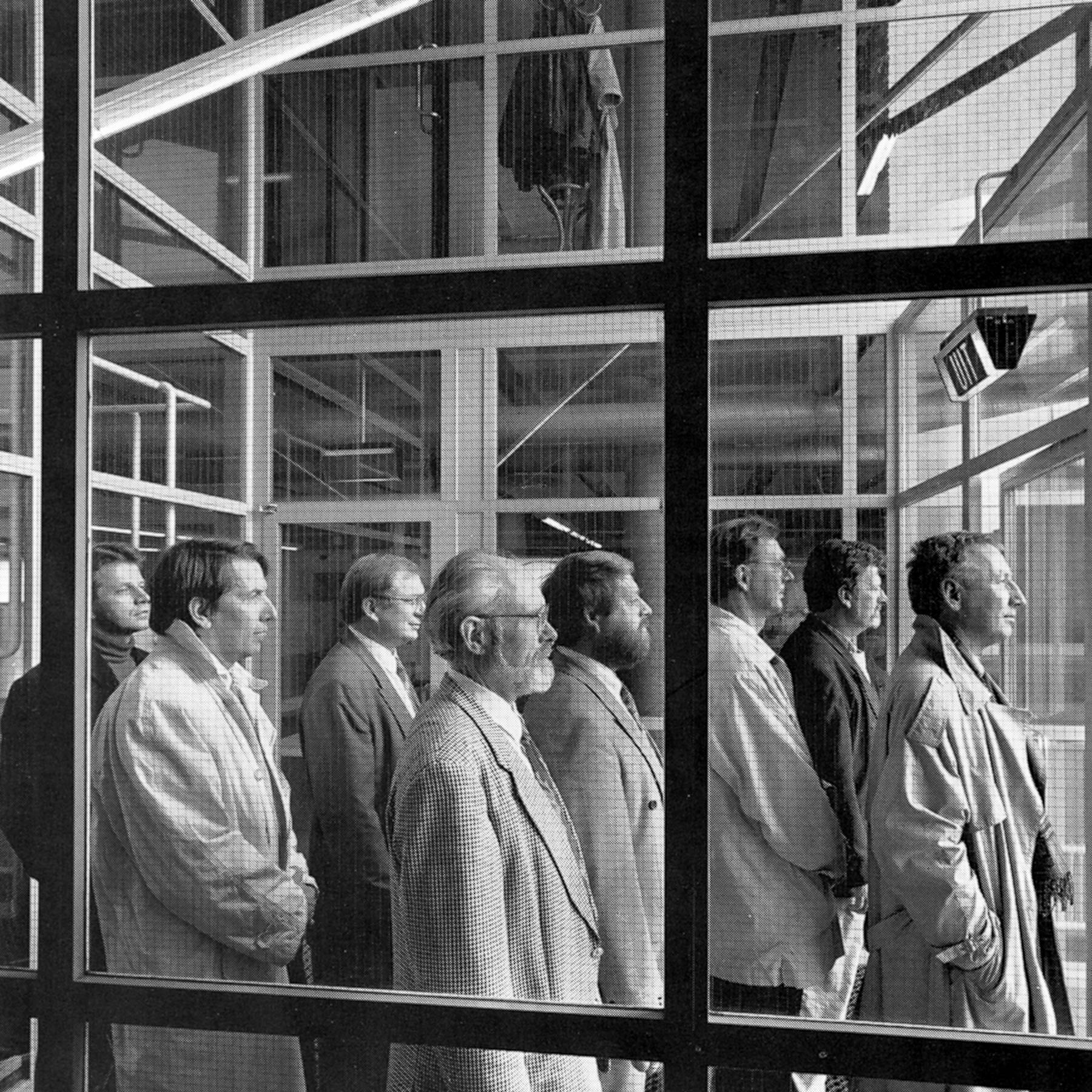 i
i
Integral service provision and professionalism are of a high quality. With the establishment of two subsidiaries for advice (Acoustics & Building Physics, and Construction) and the acquisition of engineering firm Nip, EGM can actively offer ‘all engineering’ services (now called Total Engineering). Together with a renewed organizational structure and newly appointed directors, integral quality from sketch to completion is fully guaranteed. Integral service provision will always remain part of the DNA of the office.
Total Engineering
1980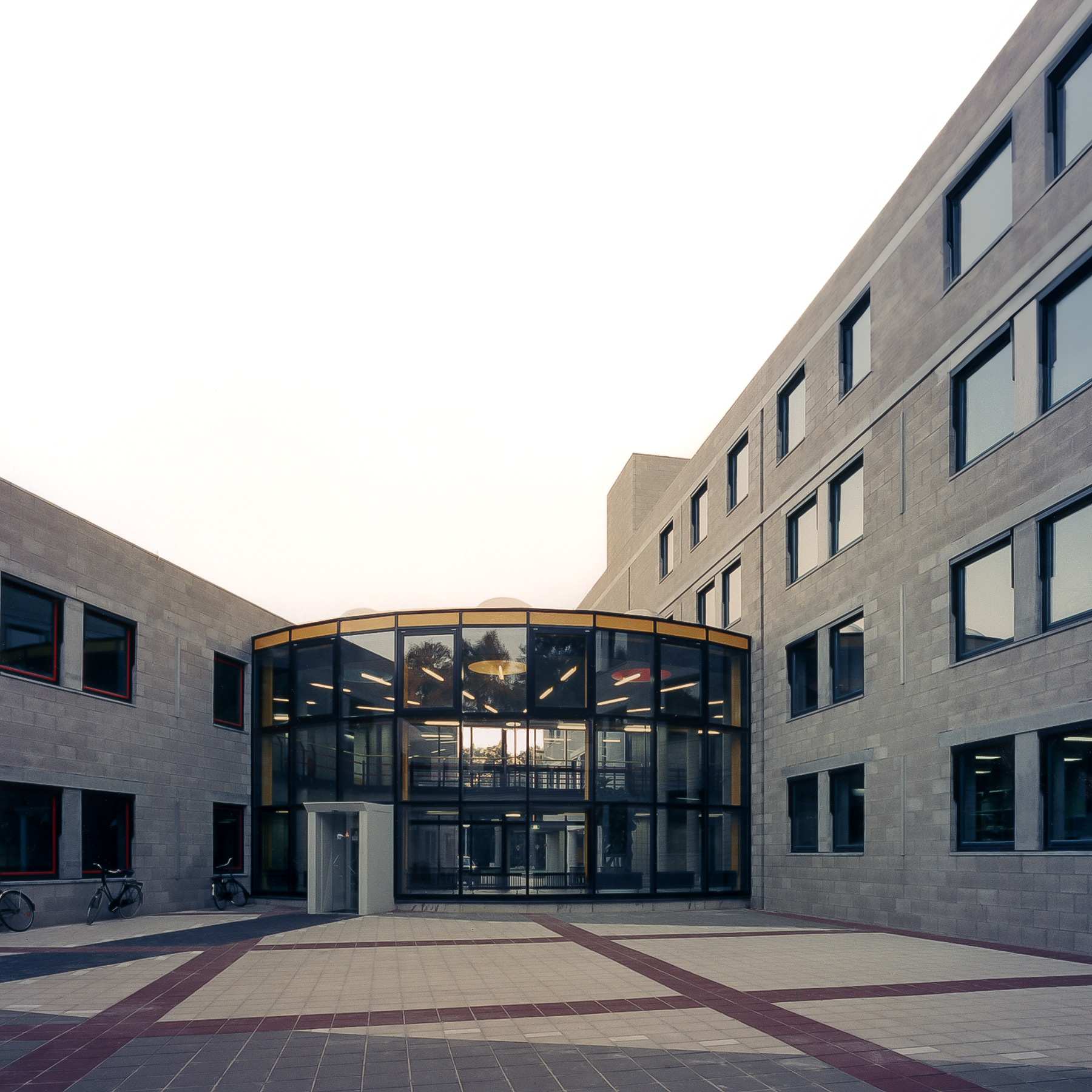 i
i
After earlier primary schools, this is the first design for academic-level education. The project for the Faculty of Applied Education and Computer Science at the University of Twente includes classrooms and practice rooms, a video studio and darkrooms. EGM subsequently designs a day-care centre for the children of staff.
University of Twente
1981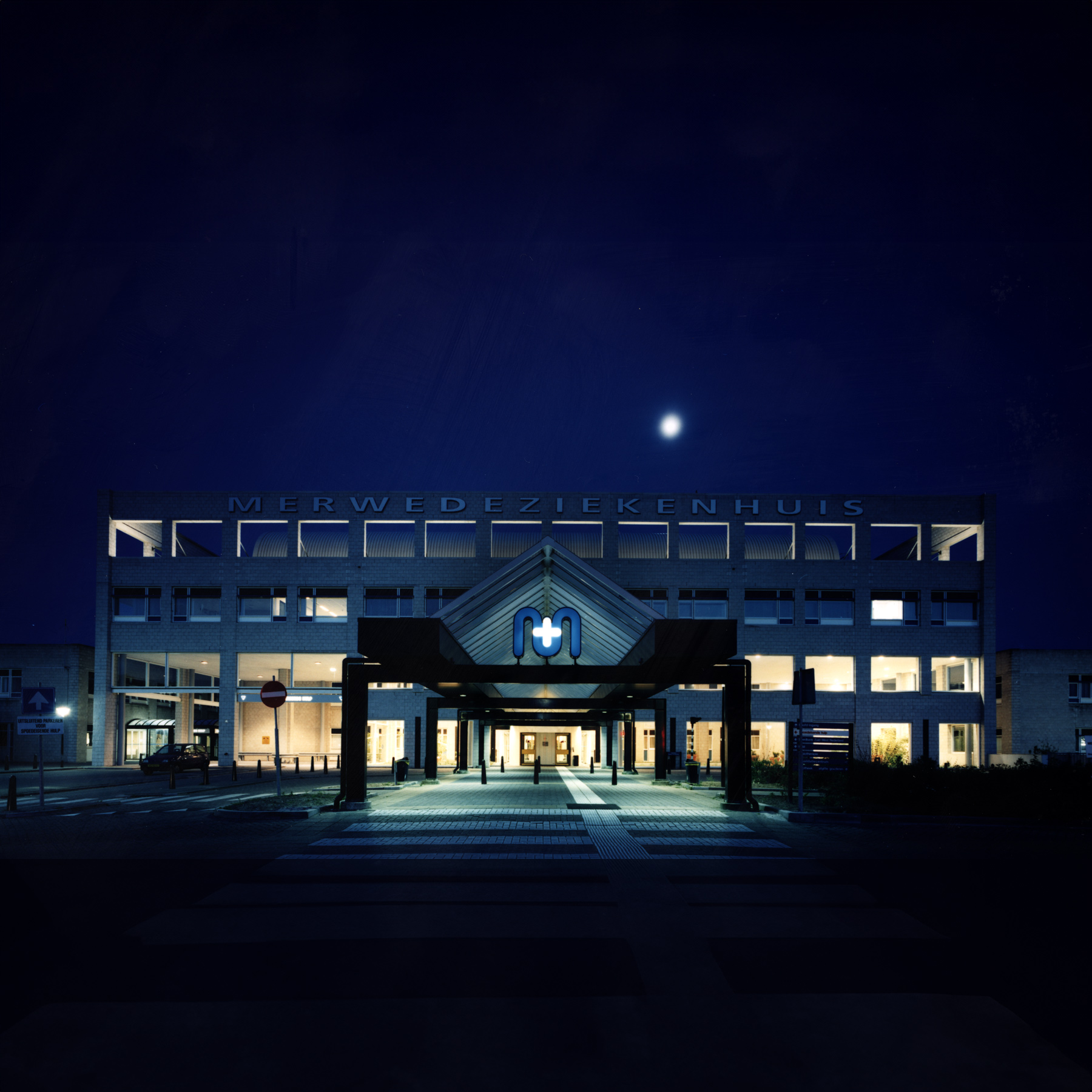 i
i
Merwede Hospital (now Albert Schweitzer Hospital) features a number of innovative design solutions. For instance, a knowledge of the psychology of colour is applied in a progressive manner, and the entrance takes the form of a conservatory with real plants and monumental art. The design ensures that the office is viewed as the leader in the healthcare field. The relationship with the hospital remains active to this day.
Merwede Hospital
1981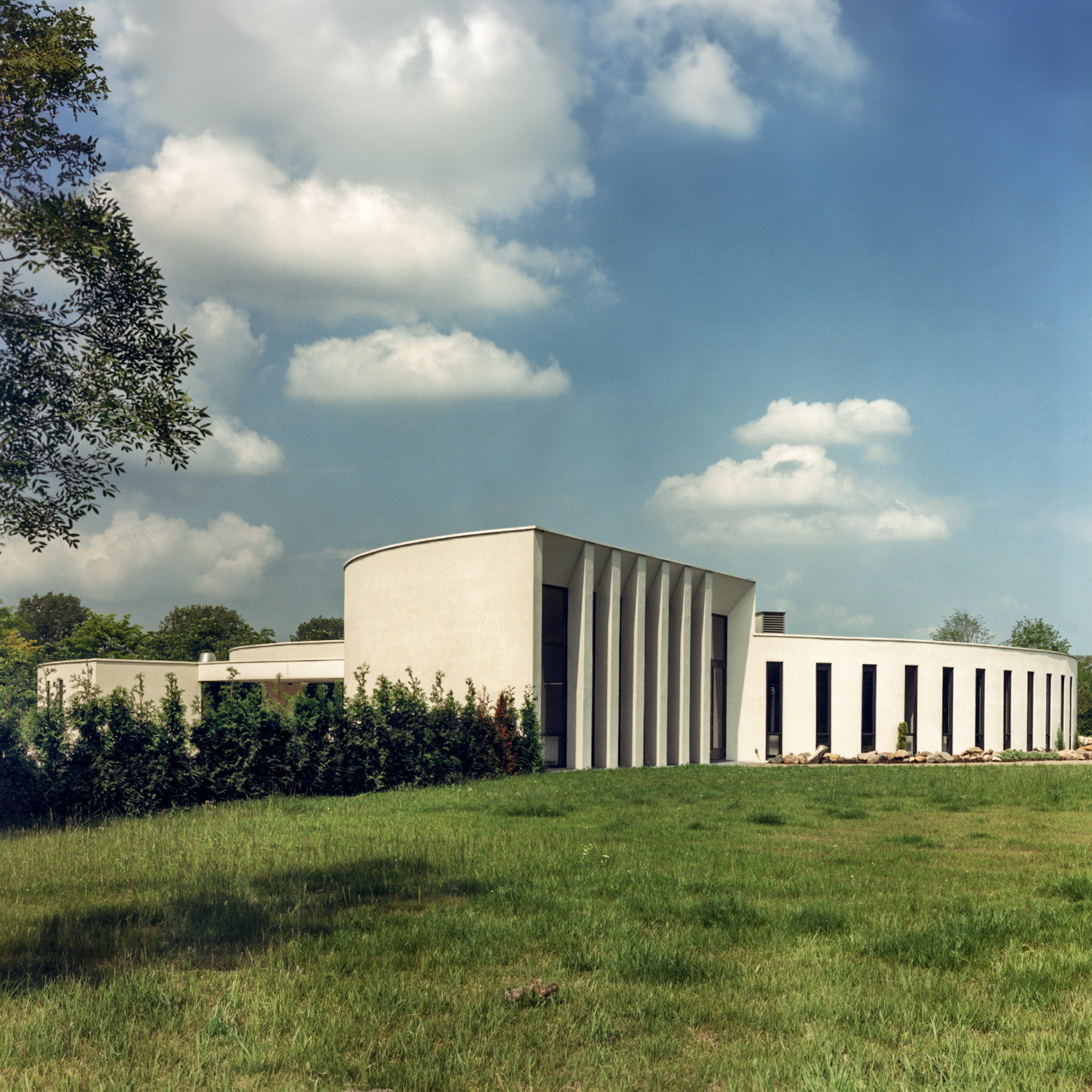 i
i
A striking example of socially inclusive design that the office propagates right from the start. The circular layout ensures pleasant spaces, the smooth conduct of daily activities and harmony with nature outdoors. The design respects every religion and every ceremony. For EGM, the human scale and careful integration still form the point of departure for each new project.
Auditorium and crematorium, Essenhof
1981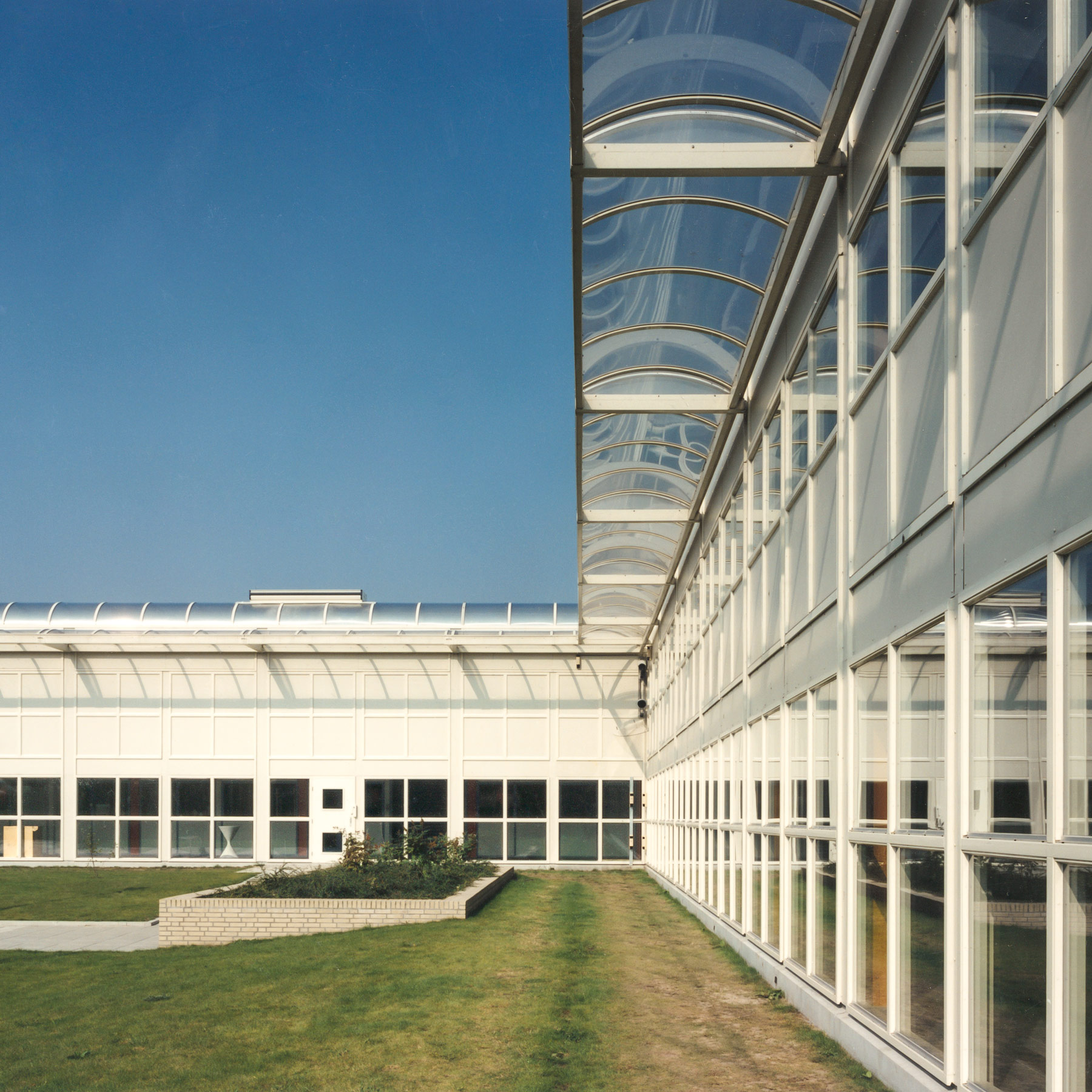 i
i
EGM started work on the design of this prison in Leeuwarden and soon completed similar complexes in Dordrecht, Middelburg, Alphen aan de Rijn and Scheveningen. The office approaches each assignment from the viewpoint of the individual, and the optimal layout of the building combines maximum security with careful integration into the surroundings. Over the years, political views have shifted from a focus on incarceration to a policy aimed at the successful reintegration of inmates into society. The innovative concepts of EGM align with this development. With the largest prisons in the Netherlands and those in Belgium, EGM’s most recent penal facilities are state of the art, and widely praised for their humane character.
De Marwei Penal Institution
1985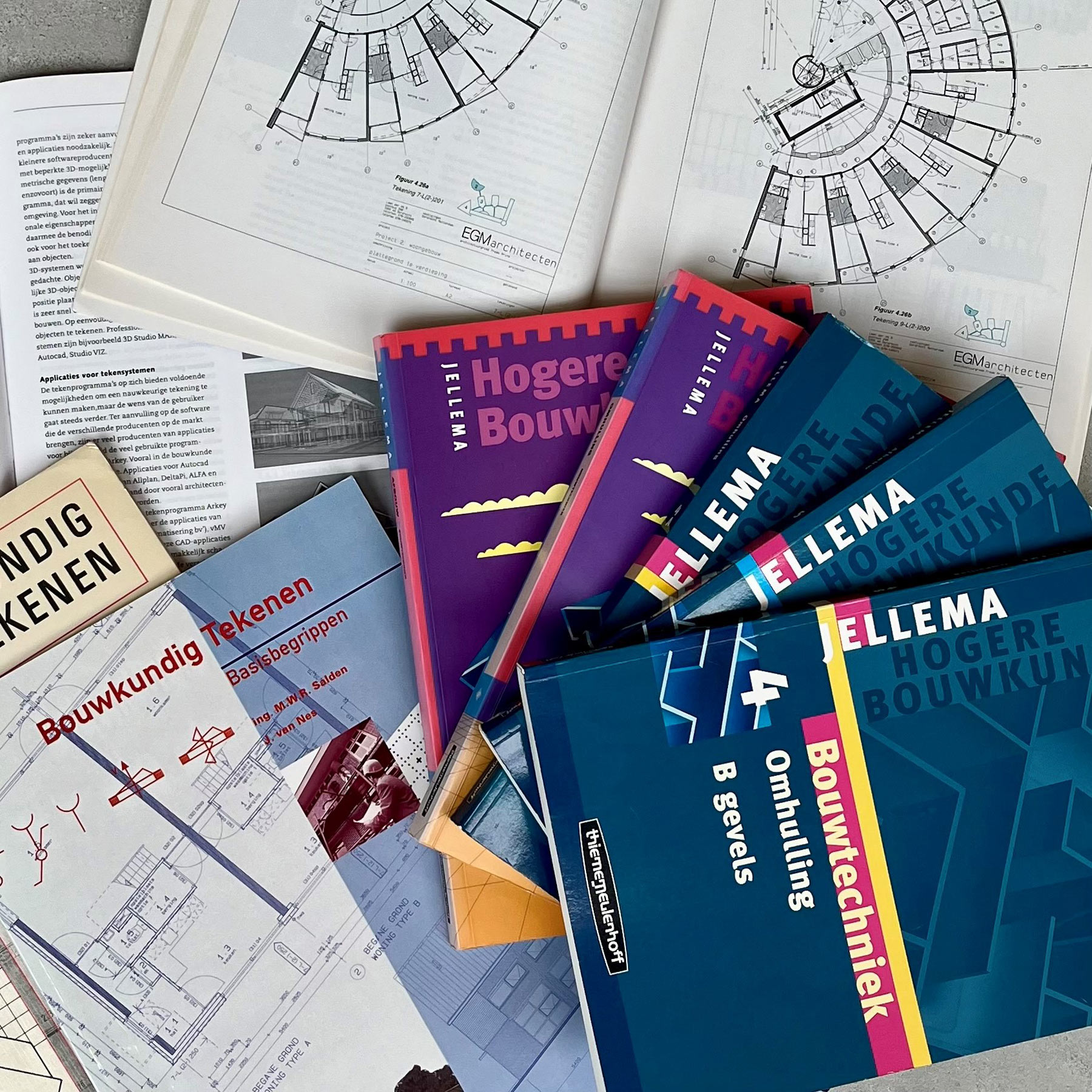 i
i
Research has been an important pillar of EGM since the very start. The office applies the knowledge acquired in projects and shares it with clients and professional colleagues. Handbook for Accessibility – on the subject of accessible and useful design for people with a handicap – has been the standard reference work on the market for over half a century and led to the appointment of EGM architect Maarten Wijk as visiting professor at Delft University of Technology. Publications such as Ziekenhuis: menselijk en modern (‘Hospital: humane and modern’)(1974) and the Jellema architecture series (since 1986) have been included in various educational programmes. EGM R&D has recently contributed to a PhD in the field of wellbeing and comfort among hospital staff, and EDAC-certified architects at EGM are engaged on a daily basis in design research into, among other things, the intensive care of the future.
Research & Knowledge Sharing
1986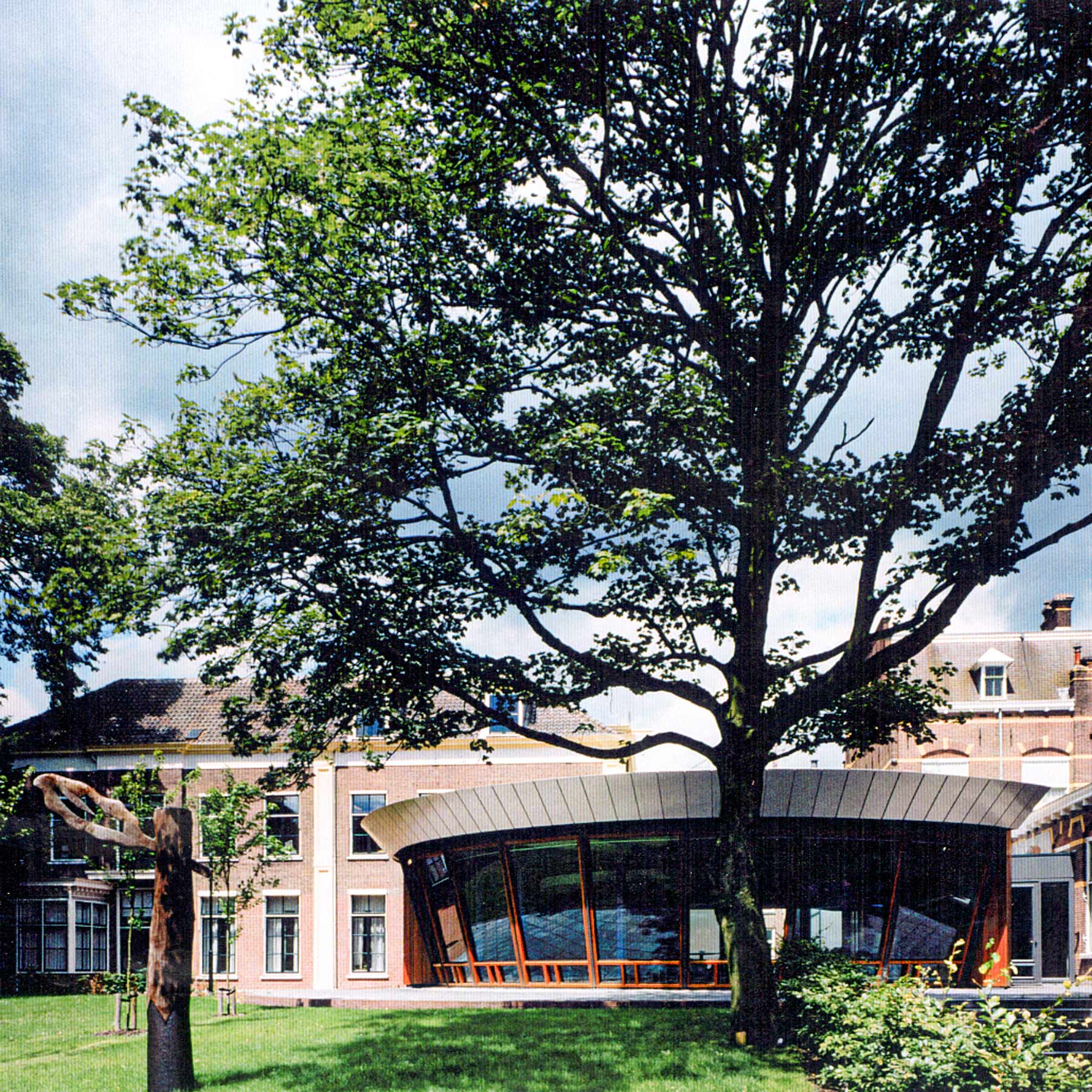 i
i
EGM is an office that has always operated at the heart of society. Nothing exemplifies this better than a town hall: the place where politicians and citizens meet each other daily. Even before the fusion, the office was already involved in town halls, and Tiel Town Hall was the latest in a long line of public buildings. The substantial project consisted of renovation, new development and garden design. The starting point for the architecture was to unite pleasant and coordinated dimensioning with complementary materials: from big and robust to small and refined. The distinctive round glazed council chamber overlooking the garden shows the people of the town where and how decision-making takes place.
Tiel Town Hall
1987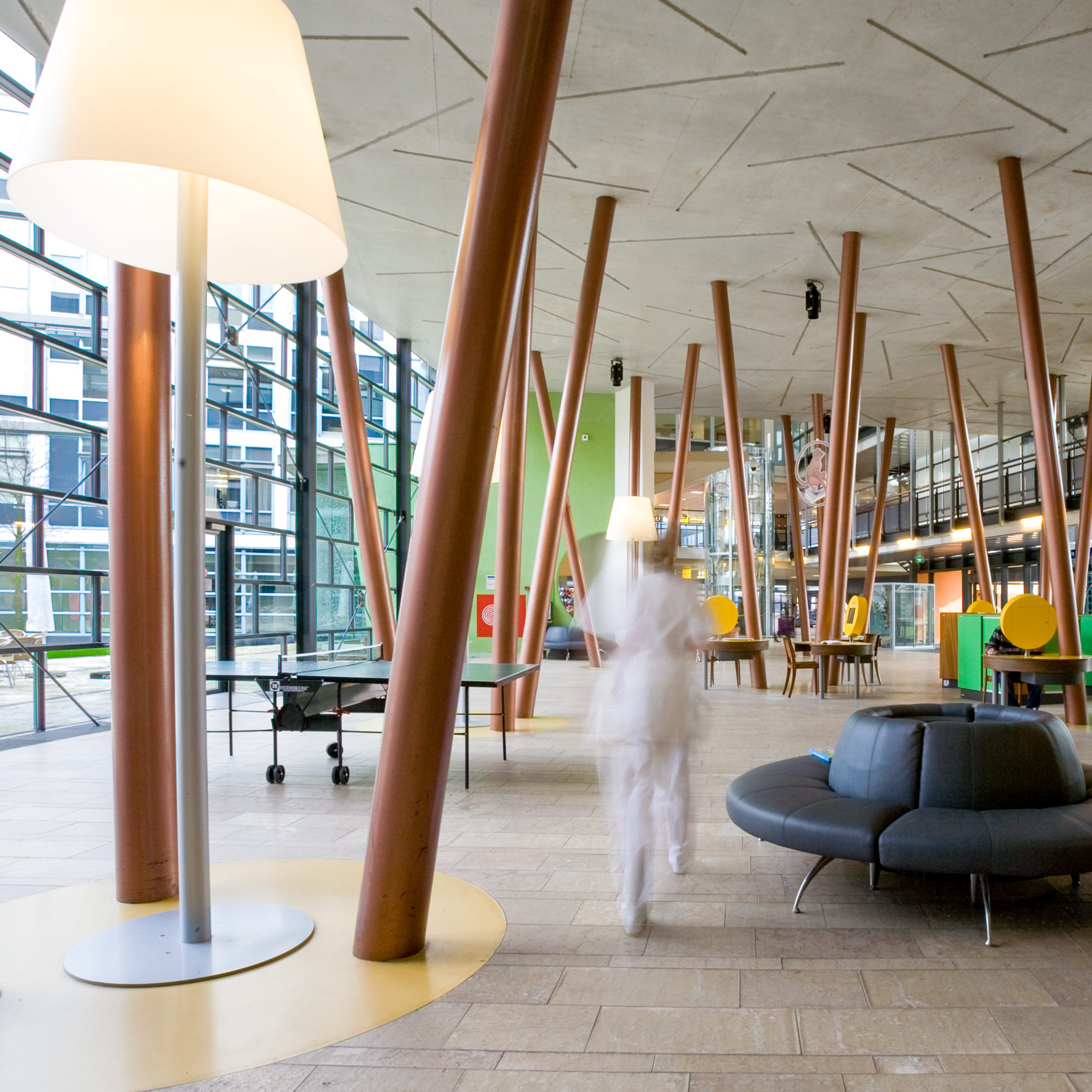 i
i
Since 1987, EGM has designed alterations and extensions to the original Wilhelmina Children’s Hospital in the centre of Utrecht. In 1993, work started on the design of a completely new hospital on the campus of UMC Utrecht. The children’s hospital opened its doors in 1999 and receives some 7,500 patients each year. Everything is done to make children feel at ease (facilities include a children’s school, theatre and outdoor playground), to involve parents and guardians in the care and recovery process, and to allow ‘normal’ life to continue as much as possible. This concept of healthcare provision and design is known today as the ‘family-centred care’ principle. EGM is now working for the Wilhelmina Children’s Hospital again with a new Maternity Centre and a large department containing Paediatric Intensive Care Units (PICU).
Wilhelmina Children’s Hospital
1987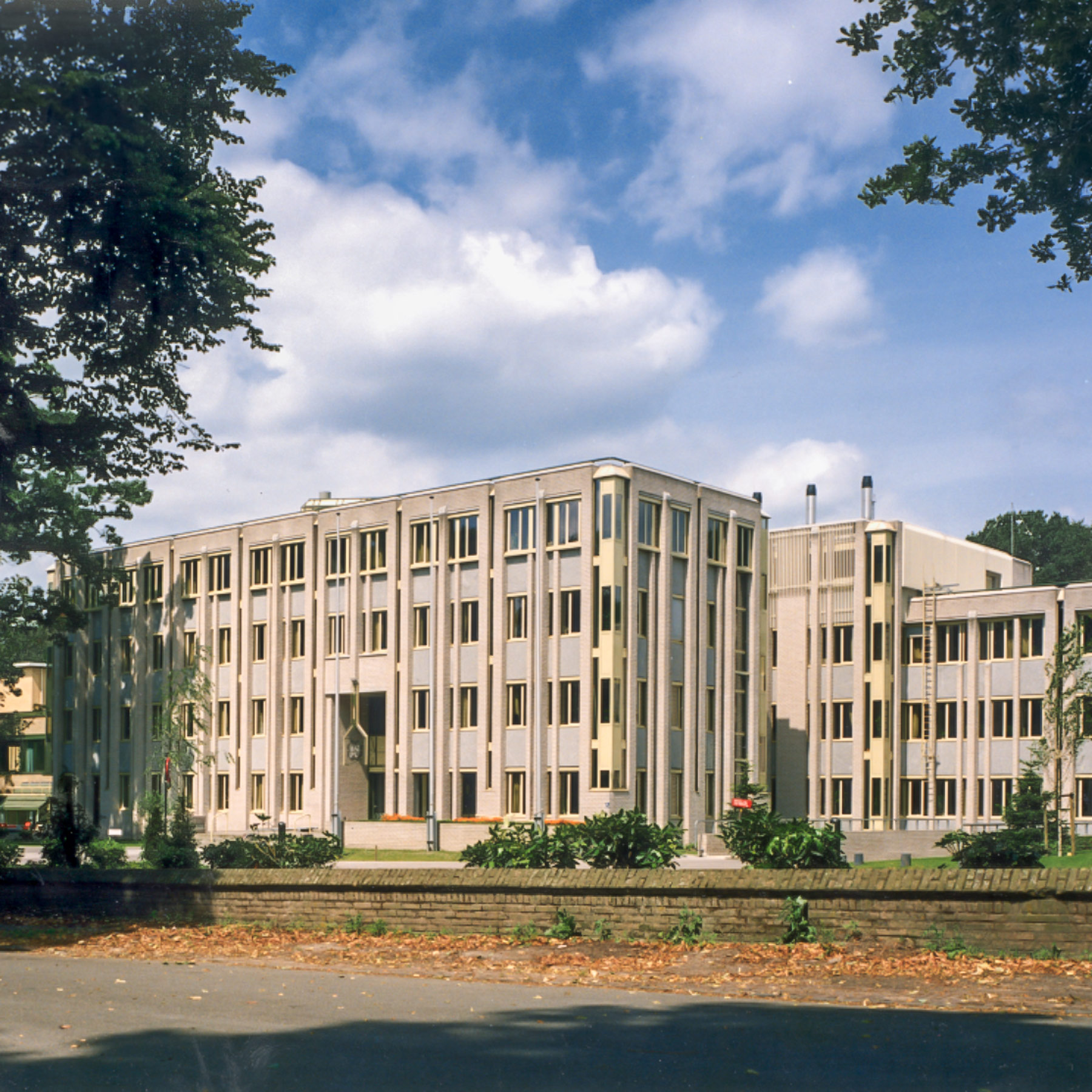 i
i
EGM extended the building for the NCRV (Dutch Christian Radio Association) in the majestic Boomberg Park in Hilversum with careful attention for the detailing of the expressive brick facade and an inviting interior. The 150-metre-long building houses the restaurant, offices and recording studios for radio and television. Incoming daylight playfully reaches the furthest corners, while artificial light in synthetic sheets reflects and radiates outwards. The circular reception hall, numerous through views and meeting places, and the landing (or ‘pulpit’) halfway up the steps, help to create the desired atmosphere of serenity and contemplation of this broadcaster.
NCRV, radio and television broadcaster
1988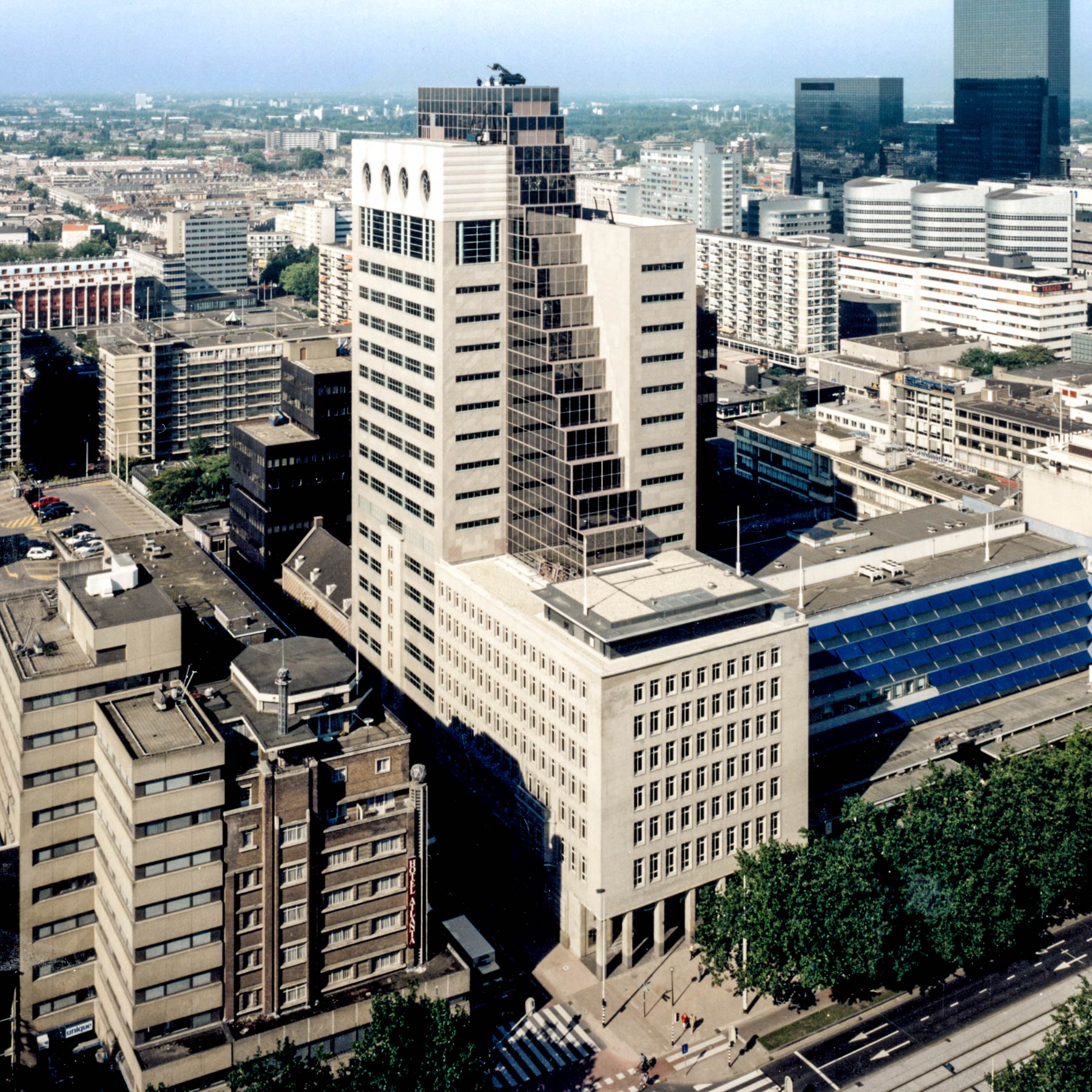 i
i
A new high-rise office tower combined with the renovation of an existing bank building. This post-modern office building occupies a prominent position in the centre of Rotterdam in terms of both physical presence and cultural value. The new building consists of three slender slabs, with the middle volume designed as a glazed and stepped structure above the atrium, called the ‘Stairway to Heaven’. With this office, EGM took a big step in the world of commercial office development.
MeesPierson head office
1988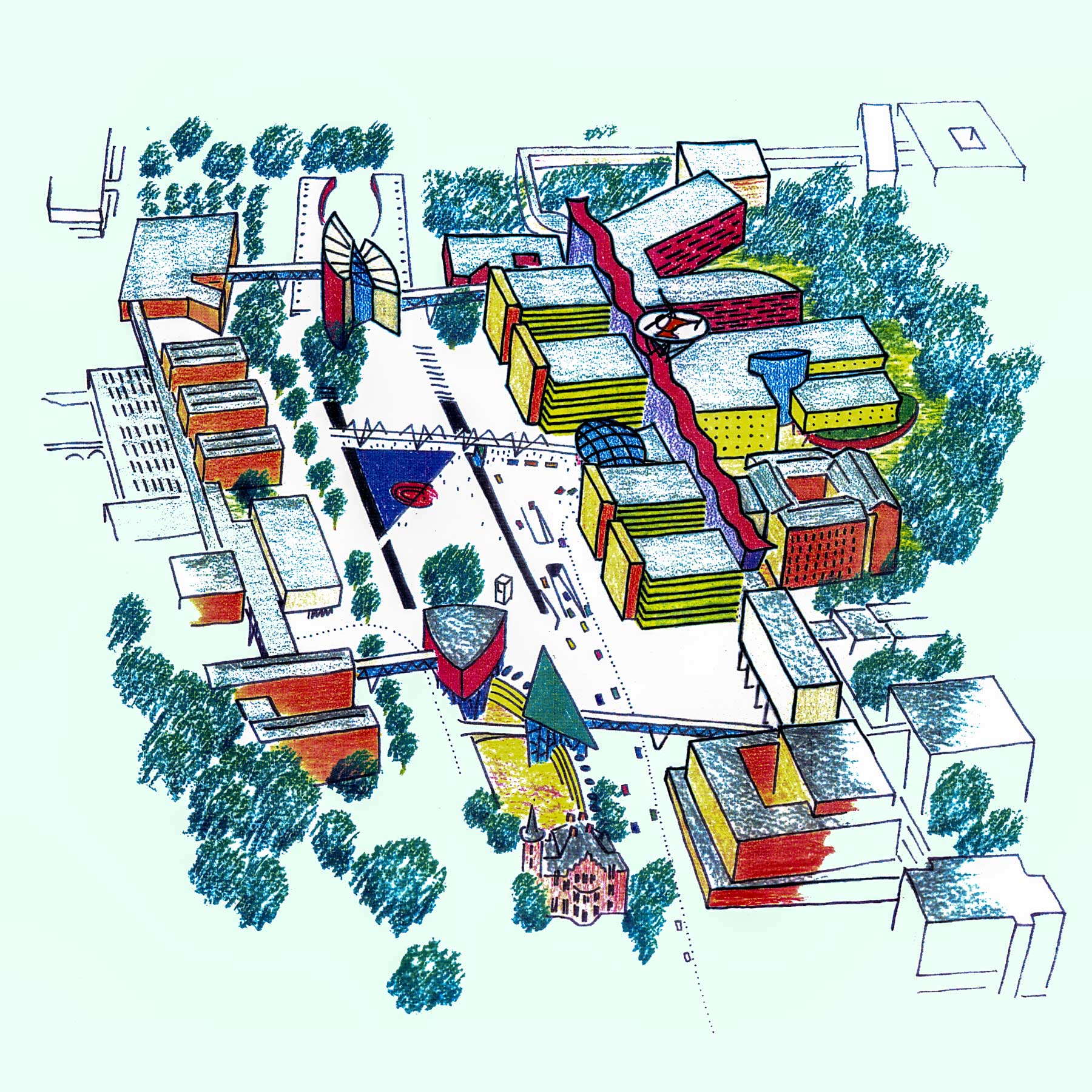 i
i
A decades-long relationship began with the Structure Plan for Radboudumc. To this day, EGM has been realizing new buildings for care, research and education, breathing new life into heritage buildings, and revitalises its own designs many years later. The progressive ambition of the academic medical centre calls for facilities where patients can receive the best care, and where healthcare providers, researchers and students can perform at their very best. The buildings by EGM encourage healthy behaviour and stimulate the speedy recovery of patients. From 2022 on, the sustainability of the campus has been further strengthened through specific projects that reflect the motto: more nature and less development.
Radboudumc Masterplan
1989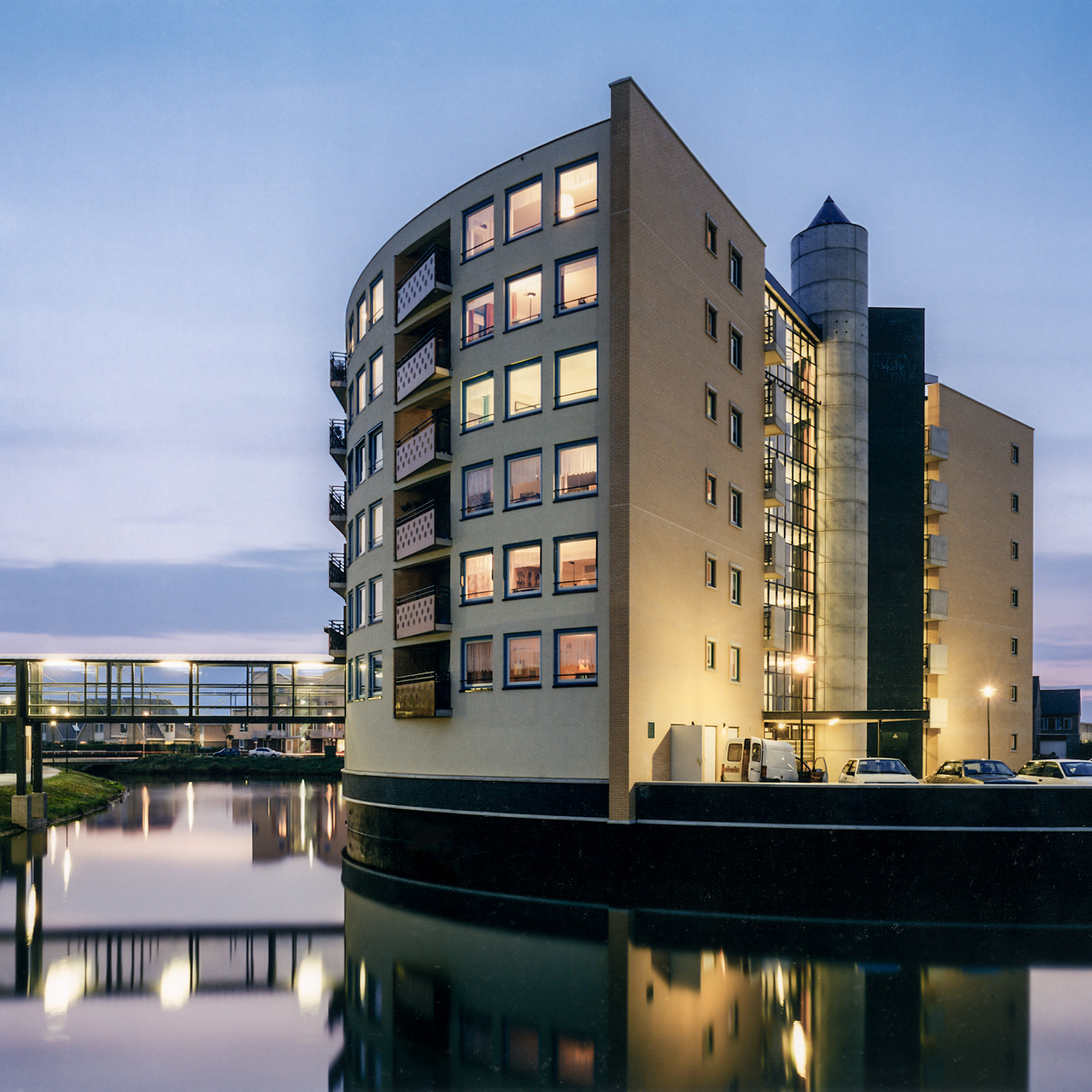 i
i
This residential and care centre is a great example of innovative thinking about combining homes and care facilities for seniors in society. The concept is based on the idea that seniors experience greater wellbeing if they continue to live independently for as long as possible, thereby retaining control of their lives. The homes are located in the heart of the neighbourhood, close to care and nursing facilities. Various forms of inpatient and outpatient care can be customized thanks to the good accessibility and layout of the homes.
Heksenwiel residential and care centre
1991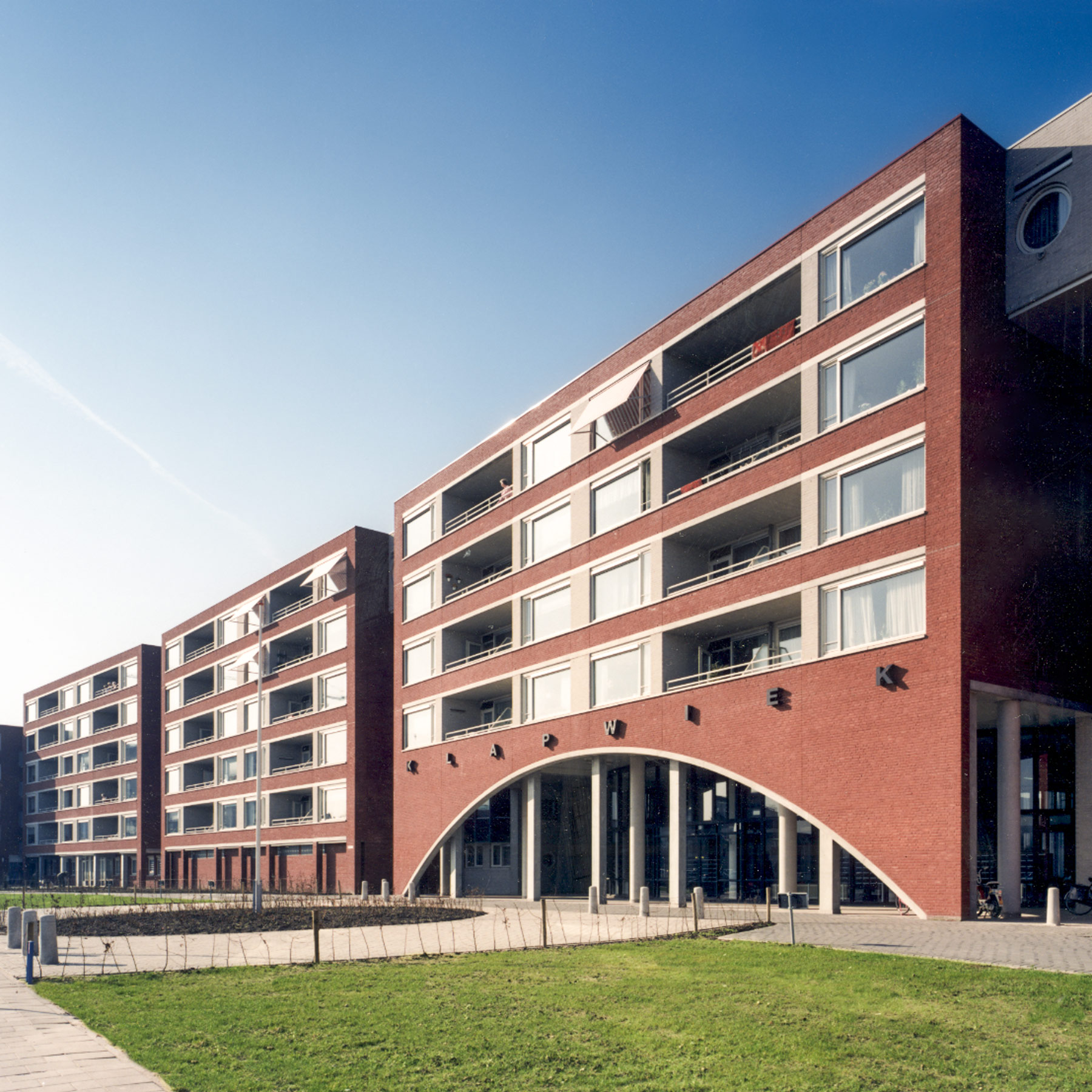 i
i
The Klapwiek (225 homes) represents the many residential-care buildings realized by EGM during this period. It provides a fine place at the heart of the neighbourhood for seniors and mentally disabled young people. Residents and visitors meet one another daily in social and functional spaces such as the recreation hall, library, hairdressers, pétanque court, and care and meeting areas. These encounters, often informal and always involving a chat, demonstrably contribute to positive health perception among residents and care and welfare workers. Exactly 30 years later, in 2023, EGM designed a sustainable extension to the building. A total of 44 timber-structure prefab homes were built on the roof. That marked the start of the building’s second life.
De Klapwiek residential building
1993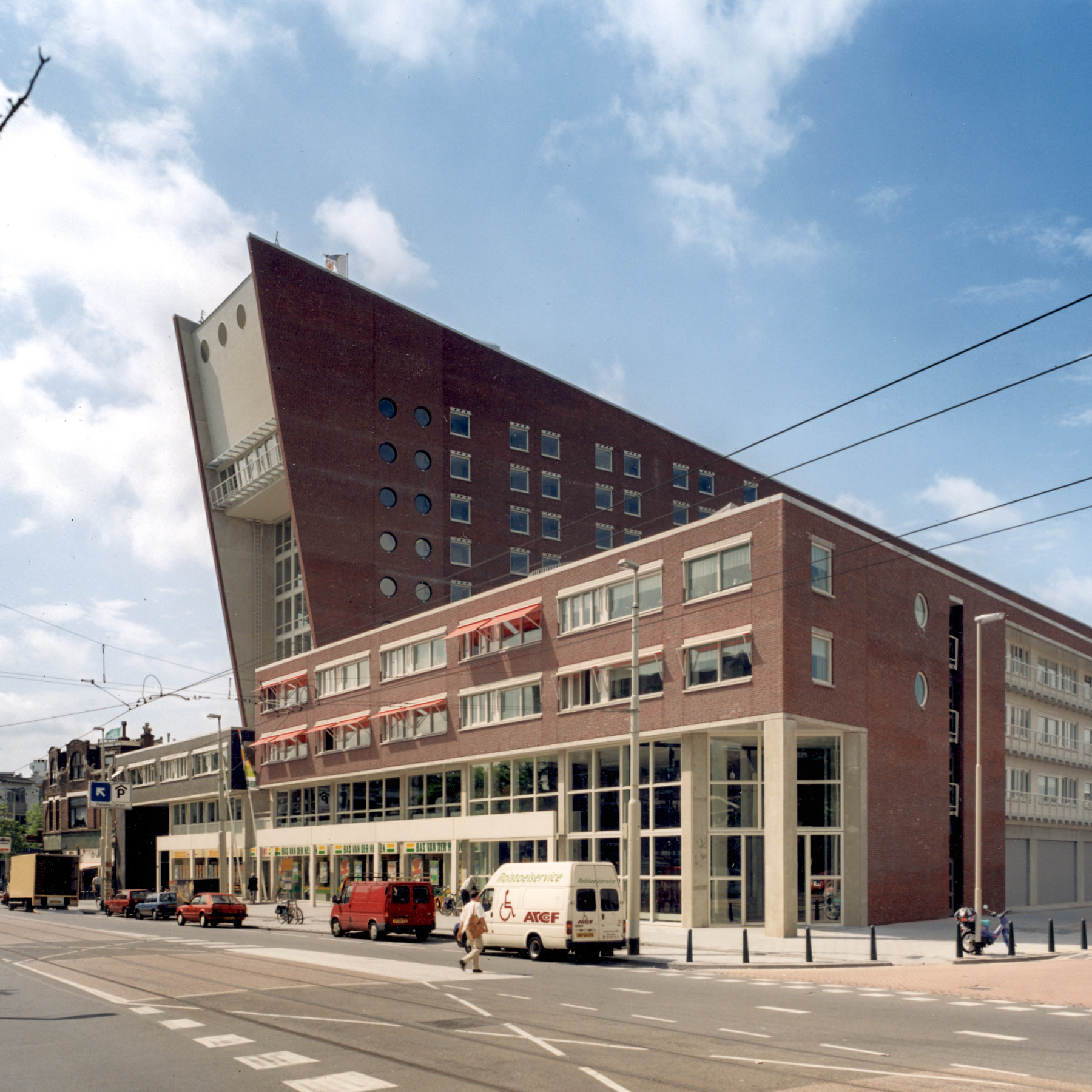 i
i
This project introduced a new concept to the Netherlands: the ‘aging-in-place’ home. The term was put forward by the clients, the Humanitas Rotterdam foundation, during a workshop. This innovative concept enables the resident to continue living in the same home during multiple phases of life: the home adapts to the occupant, not vice versa. Living, caring and nursing are interconnected in the 195 homes. A unique aspect of the floor plans is the centrally positioned block of sanitary facilities that are directly accessible from every other space. The publicly accessible heart of the complex, featuring medical and paramedical services, a restaurant and a market square, fulfils an important social function in the neighbourhood.
Humanitas residential complex
1993 i
i
Oud Beijerland town hall is about openness towards and connection with people, but most of all it is a pioneering project in terms of sustainability. The design team made integral use of the innovative environmental classification system for construction products. That list had just been published in 1994 and it indicates the environmental impact of each material and product. This enables design choices to be assessed according to measurable data in terms of sustainability. The use of environmental classes was an innovative step in sustainable design.
Oud Beijerland town hall
1994 i
i
Prize-winning renovation and restoration of this national heritage site. The design by architect Dudok dates from 1929 and required restoration in a dignified manner. The renovation created logical sight lines and circulation routes. The result is an inclusive cemetery that enables people of various faiths to hold a fitting farewell ceremony. Besides architect Willem Dudok himself, numerous famous Dutch people lie buried in Hilversum. The cemetery is also known from TV series and films.
Noorder en Zuider cemetery
1994 i
i
After the underground car park, EGM completed the Education Building as the second building of the new Structural Plan (1989). The striking Education Building is prominently located on Geert Grooteplein, the heart of the campus. Tunnels and bridges form physical connections with the hospital and the faculty. The remarkable form sparks curiosity and symbolizes the essence of the activities: acquiring and sharing knowledge. After a complete renovation in 2021, the building was renamed the Experience Center: a vibrant meeting place for students, researchers and event visitors.
Radboudumc Education Building
1996 i
i
The temporary courthouse in Zeist is perhaps the most politically and socially engaged project in EGM’s history. Before the eyes of the world and under severe time pressure, we realized a courthouse for a single temporary purpose: the Scottish criminal trial of those accused of the Lockerbie bombing. The courthouse is the transformation of a school and gymnasium, along with a new volume. Despite the fact that it was intended to remain in operation for just two years, the building is still used by the Custodial Institutions Agency for various functions. The courthouse in Zeist confirms the leading position of EGM within the field of detention and the social role it fulfils with its projects.
Temporary Courthouse, Zeist
1998 i
i
Villandry had been a convalescent home for Dutch Railways staff since 1907 and, after being sold off, it was restored to its former glory. Some 74 luxury apartments were added in two buildings. Residents enjoy the green and friendly surroundings of the French garden and the private forest. Villandry is an example of a successful combination of renovation and new development that makes the most of the distinctive green setting. During this period EGM completed many (care) dwellings and apartment buildings, each assignment involving a complex mixture of location and programme.
Apartments on Villandry Estate
1998 i
i
EGM designs an urban plan in Dordrecht featuring various apartments and multi-tenant office buildings. The complex is situated near the historic city centre, the Oude Maas river, and right next to the railway bridge. Once completed, all EGM staff will work together under one roof for the first time, merging the teams from Dordrecht and Rotterdam into a single cohesive office. The initiation of this urban plan coincides with the start of the new Erasmus MC, which would later become the firm’s magnum opus. These developments are palpable within the office, and to this day, the firm continues to work with great enthusiasm from a renewed fervour.
EGM architects
1999 i
i
Travel is an endless source of inspiration. The office has undertaken study trips to notable European cities since the earliest days. Rome was the first city where all EGM staff walked around together, enjoying architectural highlights and relaxing evenings. The excursions, to places at home and abroad, ensure that the office operates as a tightknit unit with plenty of experience in working together. Bordeaux was the destination of the special trip organized to mark the office’s 50th anniversary. A wonderfully swinging city with a UNESCO heritage centre, innovative urbanism and architecture, and of course wonderful wines in the nearby chateaux.
Travel, cities and cultures inspire
1999 i
i
Innovation in healthcare processes and accommodation often go hand in hand. At the Beatrix Hospital, EGM also contributed on a strategic level to the processes and their optimal spatial organization. The office started design on the new hospital in 1979. It was built in phases and completed in 1993. In 2000 the Rivas Zorggroep, owner of the Beatrix, teamed up with EGM to design the first Dutch ‘integrated healthcare’ project, consisting of a hospital and healthcare provision in one location. Patients are assessed at one central point to determine what is best for them: hospital, nursing home, assisted living home, care provision at home, or independent living at home. The Beatrix in Gorinchem oversees this process to prevent patients ending up in the wrong place. It ensures that patients receive the best healthcare while reducing overall costs.
Beatrix Hospital
2000 i
i
The redeveloped OLVG on Oosterpark in the centre of Amsterdam opened in 2001. Various aspects made this a typical EGM project: the complex inner-city location, renovation of an existing building, addition of a substantial new volume, and carefully phased construction involving many temporary solutions. The office drew on all its experience and expertise in the field of architecture and healthcare processes. The result is Amsterdam’s leading hospital, and a lasting and successful relationship between the two organizations. In 2024, EGM also received a commission to design a new spatial development and a new building for the hospital’s second location in the west of the city.
OLVG
2001 i
i
For EGM it is vital to safeguard the quality of internal processes and to guarantee external transparency. Project management – with meticulous attention for quality, planning and budgeting – always goes hand in hand with creative freedom in our professionally led office. This offers clients greater security during what for them is often an unfamiliar process. For EGM the formalisation of this is a matter of course. EGM earned the ISO 9001 quality certification in 2002, the ISO 14.001 environmental management certification in 2012, and the Safety Culture Ladder declaration in 2023. The quality management team follows market developments closely and ensures that EGM continues to professionalise.
Professionalisation
2002 i
i
Leiden University Medical Center (LUMC) is a global leader in a field that spans from fundamental medical research to applied clinical research. EGM designed the country’s first flexible research building for LUMC, featuring a modular and uniform layout. Biomedical, biochemical and biophysical laboratories can easily be set up anywhere, now or in the future. The building also houses a laboratory animal facility and a GMP centre for innovative medicines. At LUMC, EGM combines research and education in a single building, an expertise that has been replicated in many other projects.
LUMC research building
2002 i
i
The Jeroen Bosch Hospital in ‘s-Hertogenbosch is the largest top-clinical hospital in the Netherlands. This entirely new hospital is based on the important characteristics of a healing and healthy environment. The use of nature, daylight and fresh air has been maximised, with design choices aimed at reducing stress, encouraging movement and promoting independence. These are ’tools’ that EGM continues to refine, and which are also used in projects outside healthcare to design healthy buildings.
Jeroen Bosch Hospital
2002 i
i
Located close to The Hague, this sustainable and prize-winning office building is used by the district administrators, police service and fire department. EGM applied innovative technologies on the facade and in the interior climate-control system of the building. The natural ventilation system, featuring a rotatable hood, on the roof, was the first of its kind in the country. This chimney hood saves energy smartly and ensures a healthy interior climate. As a result, the building can be ventilated naturally for 85 per cent of the year, without the use of energy.
Ypenburg municipal offices
2003 i
i
EGM is a pioneer in healthcare. The firm has realised many groundbreaking buildings in both the curative and care sectors. Bas Molenaar (former partner and architect) is the driving force behind the innovative designs in healthcare. He was instrumental in the development of the Wilhelmina Children’s Hospital, the Erasmus MC (sketch), and various projects within the OLVG and Radboudumc. Both domestically and internationally, he is invited to give lectures and from 2004 to 2010 he held the chair of Building & Healthcare at the Technical University of Eindhoven. In 2018, Bas received the Susan Francis Design Champion Award in London, reiterating his credo “I care more about people than buildings”. The award is given to a visionary leader in healthcare.
International recognition
2004 i
i
This eye-catching building on the Leiden University Medical Center (LUMC) campus is entirely wrapped in glass. The academic education building is designed to resemble a medical specimen cabinet, where individual elements are clearly distinguished: lecture and conference halls, classrooms, Training Center, Anatomical Museum and red boxes containing cloakrooms and catering areas, among others. Together with the Research Building, also designed by EGM, these buildings are iconic landmarks on the university campus. They symbolise the symbiosis between education and research, an area at which EGM excels.
Education building LUMC
2004 i
i
The Tony Molleapaza Rojas Children’s Hospital in Arequipa, Peru, provides medical care to children with congenital anomalies such as cleft lip and clubfoot, free of charge to their parents. The hospital also serves as a training institure for local teams, enabling them to provide care independently in the future. EGM designs the hospital pro bono out of social responsibility. The individual pavilions are designed with earthquake risks, the local climate, and the use of local materials in mind. Thanks to the efforts of the PAZ-Holandesa Foundation, Dutch doctors travel to Peru every year, and thousands of children have been now been helped.
Tony Molleapaza Hospital, Peru
2005 i
i
The book Doordeweeks (on a weekday) is a gripping photo essay capturing the ordinary, and therefore the real, life in and around a building. For this publication, EGM commissioned five photographers capture daily life in three different buildings each. Work, emergencies, growing up, staying, and life & death are portrayed in an honest and sometimes confronting way. By focusing on the people in, and the use of, a building, the book reflects what EGM stands for in each of its designs. The book is dedicated to former chairman of the board and passionate EGM member Jan van Middelkoop, who passed away unexpectedly in 2004.
Doordeweeks (on a weekday)
2005 i
i
This office for a secure youth care organisation is an extension to a classic villa. It exemplifies an innovative use of materials, which, like new construction methods, forms, and colours, can enrich a building or place. The brick-red powder-coated steel grilles are sourced from livestock farming. This experimental application gives the building its own identity while at the same time respecting the villa and its surrounding park. Other projects where EGM innovates to strengthen architecture include the Temporary Courthouse in Zeist, and the church De Ark, featuring external walls made of semi-transparent polycarbonate; the chapel in Den Bosch with a zinc-clad, fish-scale roof; and the lecture hall at LUMC, which is clad with gold-copper lozenges and protrudes from the facade like a golden spine.
Ottho Gerhard Heldring foundation
2006 i
i
In 2006, EGM designed an office complex that is highly sustainabile and prioritises the well-being of its users. The complex is carbon-neutral and incorporates numerous technological innovations to minimise energy consumption, generate and use sustainable energy, and create a comfortable indoor climate. As a result, the office set a new standard in the industry and was presented by the Ministry of Economic Affairs as a benchmark for a sustainable future.
CO2-neutral offices GouweZone
2006 i
i
EGM realised an innovative rehabilitation centre here, designed without corridors. This concept was developed by EGM in the study project ‘living group without corridors’. Each ward has eight patient rooms directly adjoining the shared living area, allowing patients to be part of the group even from their beds. This design encourages a gradual reintegration into a larger community: from their room to the group, from the group to the centre, and ultimately back into the outside world. Architecture is explicitly used here to support recovery and stimulate movement. EGM also integrates this knowledge in schools, for example, to encourage children to move (more).
Marnix Rehabilitation centre
2006 i
i
Brick is pre-eminently a material that suits the function of social and public buildings. In the Netherlands, this natural product is familiar and associated with a friendly appearance. The home base for the Hollandse Delta water board is a typical example of this. The organisation, which deals with water management, often operates invisibly in the background. With this office, it steps out of the shadows in a way that is familiar and recognisable to citizens while offering employees a pleasant workplace that they speak of with pride and enthusiasm. The design of a pleasant and functional working environment with an appealing and fitting aesthetic is a hallmark of EGM’s work.
Hollandse Delta water board
2008 i
i
This prison is illustrative of the major changes in the treatment of detainees in the Netherlands. The state-of-the-art complex, opened in 2016, houses more than 1,000 inmates, making it the largest in the Netherlands. Yet the design provides a humane and safe environment for both staff and inmates, contributing to improved social behaviour and a greater chance of successful resocialisation. EGM developed this innovative vision of detention and continues to design with this approach to this day. In doing so, the firm helps shape the growing political and societal focus on successful reintegration into society, rather than on mere incarceration.
Zaanstad judicial complex
2009 i
i
The Curaçao Medical Center (CMC) is a state-of-the-art hospital designed with the well-being of the people of Curaçao in mind. As such, the island’s history, culture, and environment are deeply integrated into the design. EGM is a specialist in creating a Healing Environments and has achieved this here with numerous locally specific features, such as rooms for large family groups to visit their loved ones, spacious roof gardens and sea views from the patient rooms. The CMC is the largest building in Curaçao and holds the LEED Gold sustainability certification.
Curaçao Medical Center
2010 i
i
The BONAS book series honours important designers with monographs and has now published more than 60 volumes on Dutch architecture and urban planning. In 2011, the monograph on Joost Boks, a defining architect of the post-war years, was released. In his office, he chose Wout Eijkelenboom and Bram Middelhoek as partners in one of the predecessors of EGM. Boks shared his passion for the architectural profession abundantly. His oeuvre includes iconic buildings such as the Dutch Pavilion at the 1958 World Exposition in Brussels, the Clock Tower at Arlington Military Cemetery in Washington DC, the Bouwcentrum in Rotterdam with its Henry Moore artwork, and the Delta Hotel in Vlaardingen.
Monograph Joost Boks
2011 i
i
In 2012, a large potential assignment in Asia led to a collaboration between EGM architects and Gortemaker Algra Feenstra architects, under the name Dutch Health Architects (DHA). DHA combines the expertise of two leading firms in the healthcare sector. There is a lot of foreign interest in this ‘knowledge export’. The team advises on healthcare processes and realises high-quality hospital and healthcare projects in Slovakia (photo), Saudi Arabia and Indonesia, among others.
Founding Dutch Health Architects
2012 i
i
Architecture and art are seen by some as stand-alone disciplines, but they can also be closely connected and mutually reinforcing. EGM consciously integrates art, recognizing its ability to inspire, give meaning to spaces, connect people, evoke wonders, or provide calm. This integration occurs both in and around the buildings designed by the firm, as well as within its own offices. ‘El Futuro’ (a corten steel sculpture by Spanish artist Toni Marì) is a gift from EGM to the city of Dordrecht in honour of the agency’s 40th anniversary. The sculpture represents confidence in the future and connection with the city where the agency is happily based.
Art
2014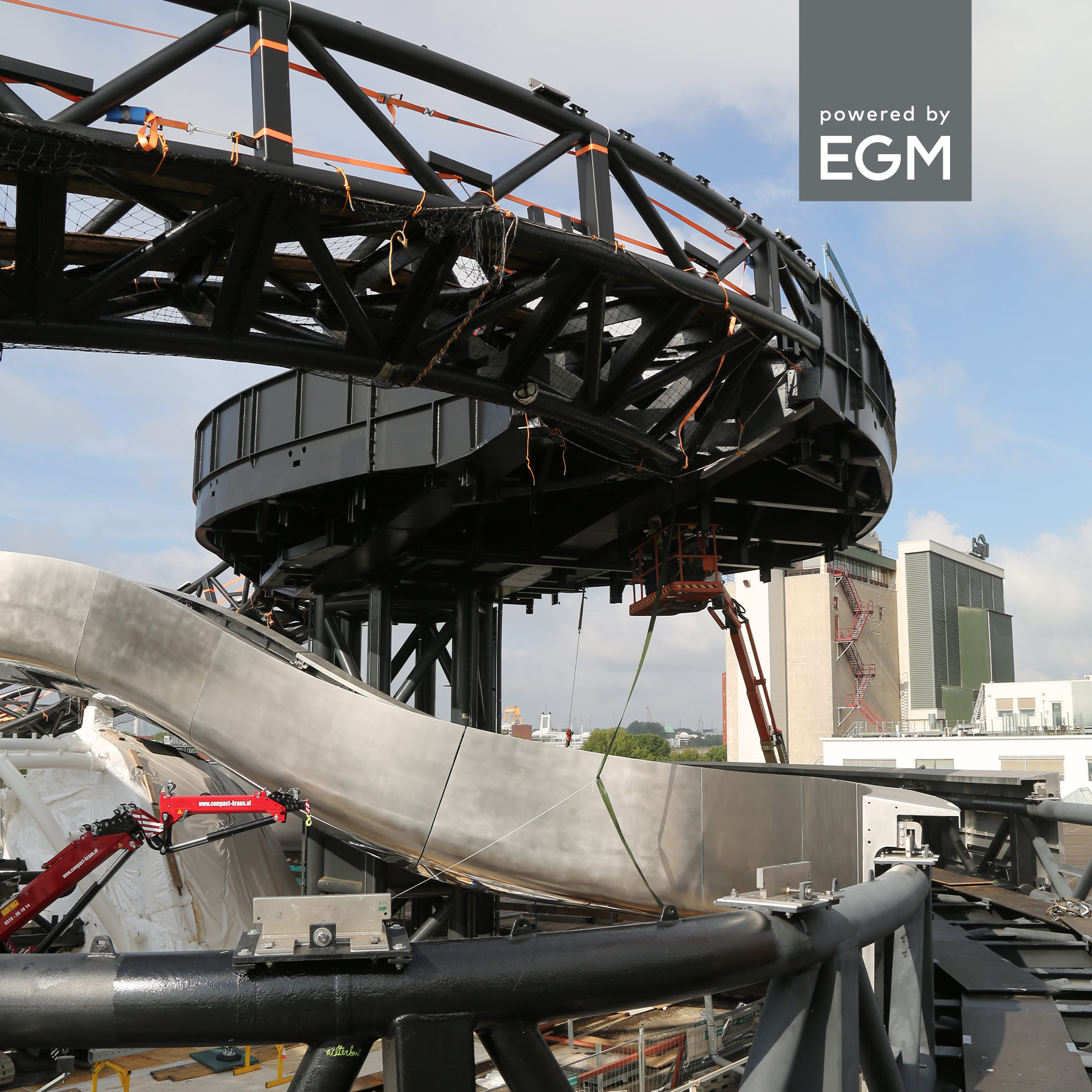 i
i
Since its founding, EGM has been a full-service agency. This unique combination of specialised knowledge and skills in both the design and construction fields has sustained the firm all along, eventually leading to the establishment of Powered by EGM. A specialised team within the firm that ensures smooth and efficient engineering. This is achieved through advanced knowledge of BIM (Building Information System), 3D modelling, construction engineering, detailing, building physics, visualisation and construction processes management. Powered by EGM is now an established name with external clients across the architecture, construction and development sectors.
Launch Powered by EGM
2015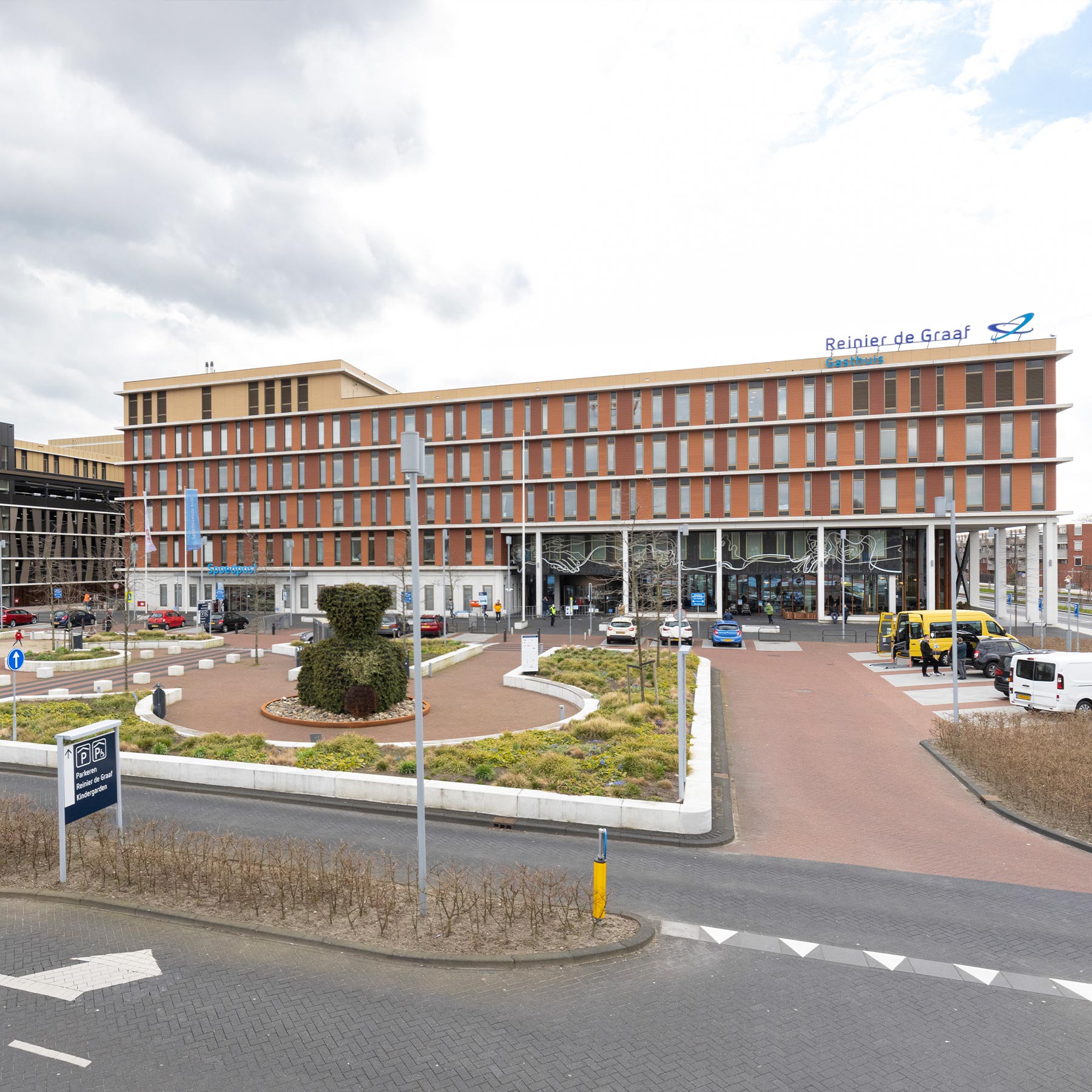 i
i
The new hospital in Delft is a compelling example of connectedness and hospitality. At all scales in and around the building and in all encounters between people, careful thought has been given to how the residents of Delft and the surrounding area will experience it. It is reflected in the welcoming green forecourt with seating areas, the warm tones in the reception hall, the personal greeting, and the use of locally recognisable materials, graphic elements, and colours from Delft and its surroundings. So the oldest hospital in the Netherlands remains both modern and cherished.
Reinier de Graaf Hospital
2015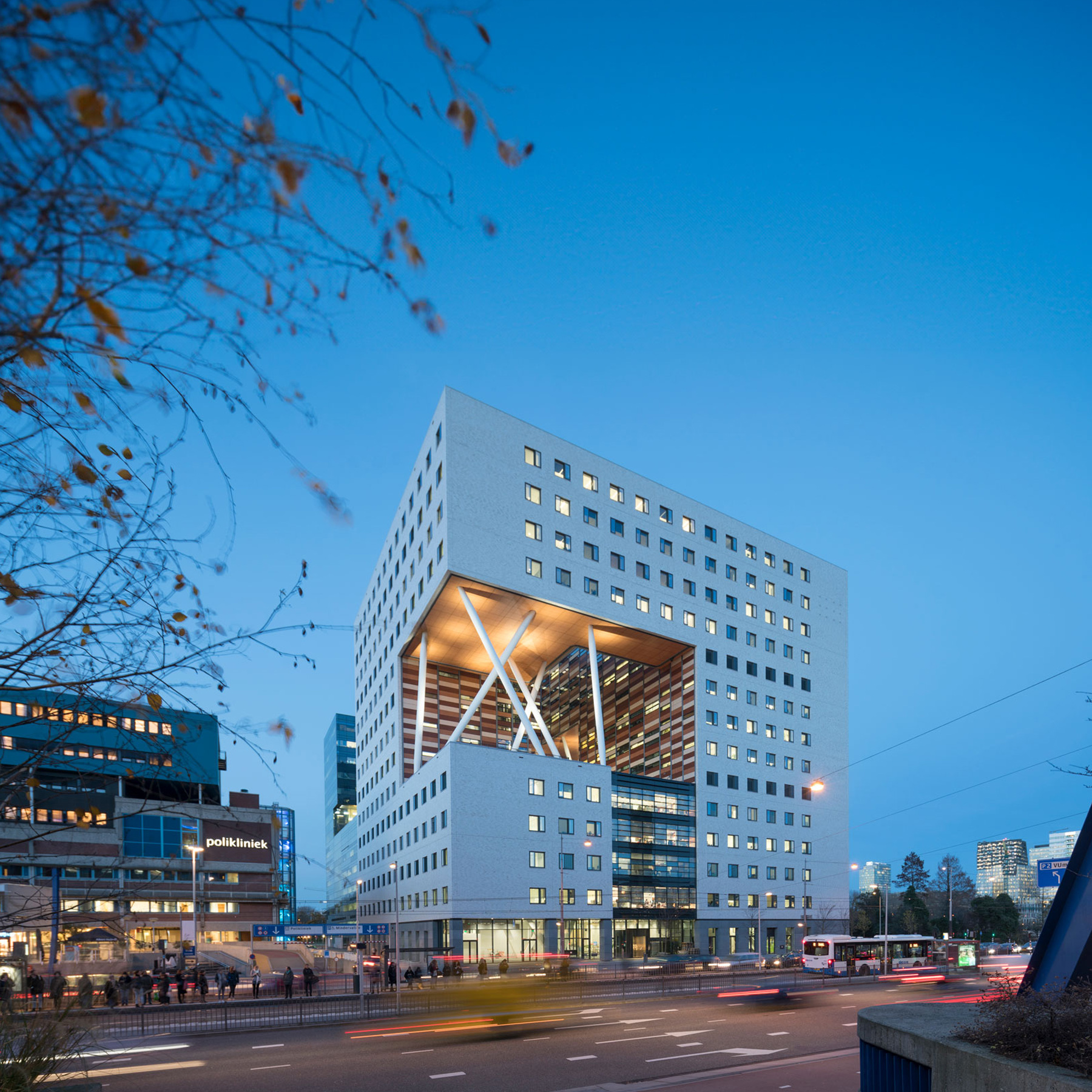 i
i
In O|2, researchers from Vrije Universiteit and Amsterdam UMC collaborate in a unique way on societal issues within the field of Human Life Sciences. Based on in-depth understanding of the processes, uniform solutions have been designed alongside several specials. Here, fundamental and applied beta-medical research comes together, from coffee corner and lecture hall to the ML-III laboratory. The building is an icon of new collaboration and knowledge sharing, maximally facilitating future-oriented research and knowledge creation.
O|2 Research and education building
2016 i
i
The festive opening of the new academic hospital in Rotterdam in 2018 marks a milestone for EGM. The firm’s largest and longest-running project can be seen as its magnum opus, literally designed ‘from city to chair’. For 15 years, a complex puzzle of demolition, renovation, and new construction took place in the centre of Rotterdam, while 15,000 people walked in and out daily and healthcare continued 24/7. The result is a university medical centre that is widely praised by medical staff, personnel, patients, students, and visitors alike. Erasmus MC has been awarded various healthcare, sustainability, and architecture prizes, recognised by both Rotterdammer residents and international professional juries.
Erasmus MC
2018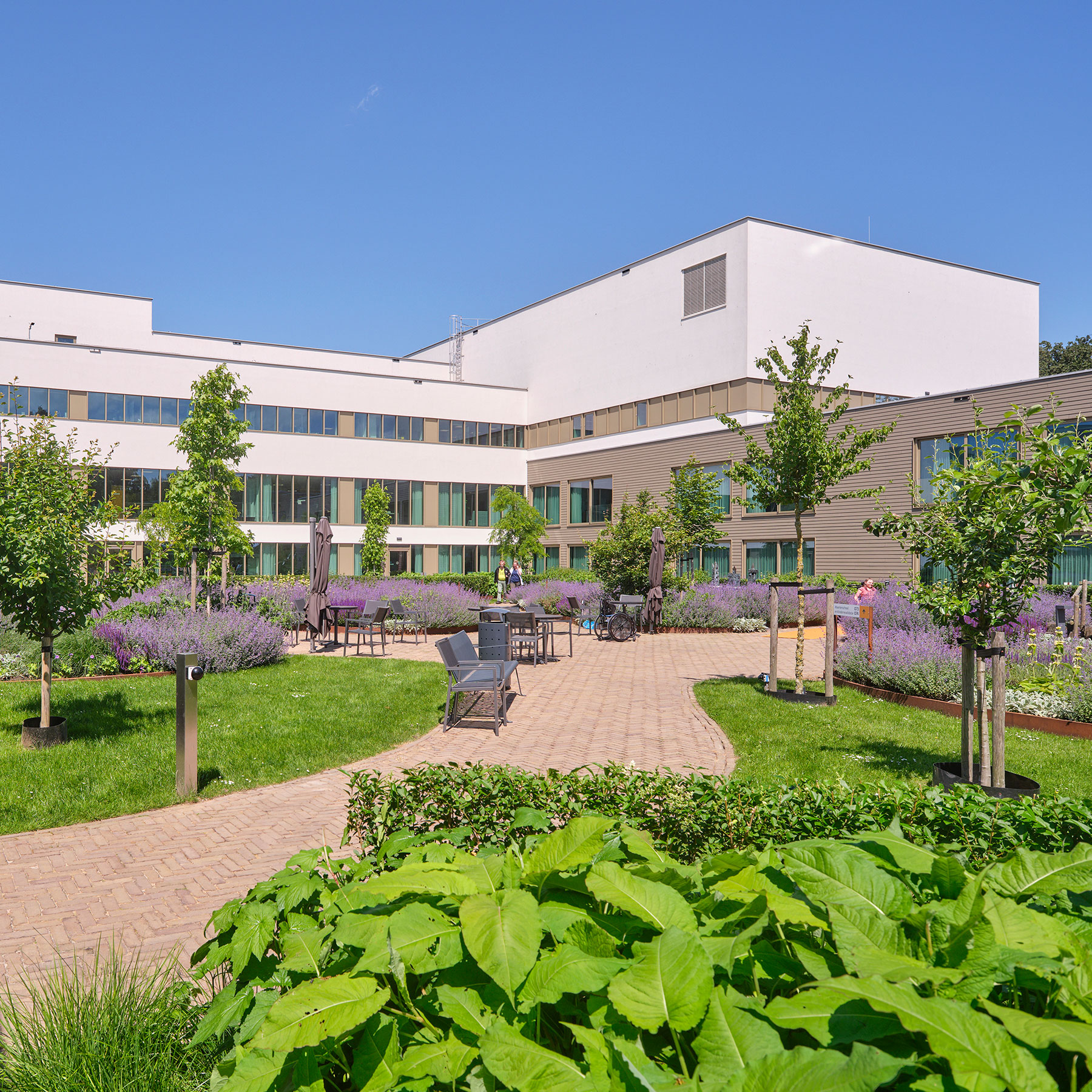 i
i
This internationally renowned orthopaedic clinic treats posture and movement disorders. It features the most modern operating theatre complex in the world, alongside a rehabilitation centre and patient accommodation. Outside, a beautiful therapy garden has been created where everyone can exercise. The forest surrounds the clinic, and this green, healthy environment almost literally flows into the building in many places.
Sint Maartens clinic
2019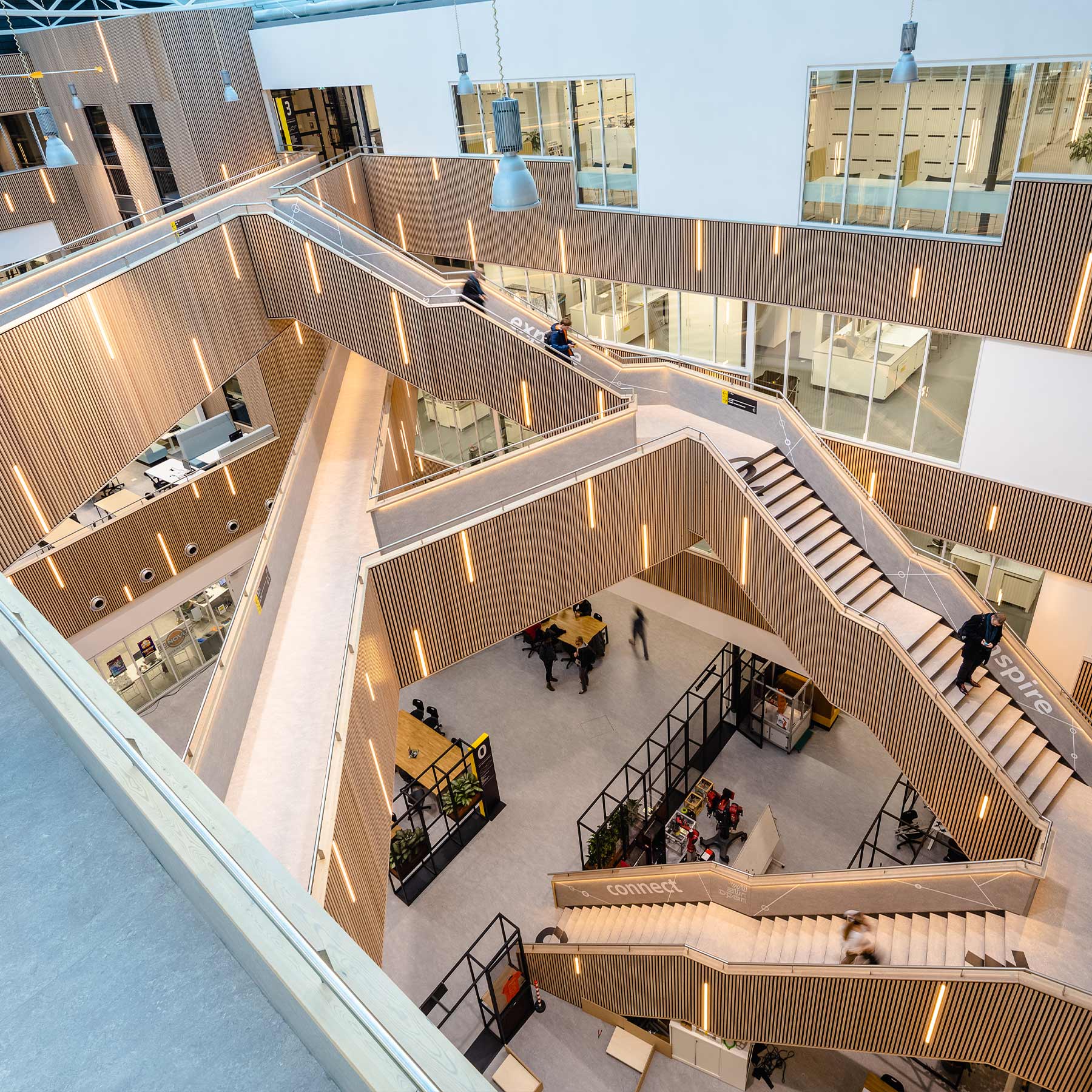 i
i
In Eindhoven, a former TNO laboratory has been transformed into a vibrant and inviting school for technical higher education colleges. For the best learning and practical experience, numerous inspiring spaces have been designed, each with its own unique dynamic. Thanks to EGM’s extensive experience in educational design, the building is not only functional but also playful and engaging. This is most evident in the atrium, where meeting spots on and around the stairs bring students and lecturers together for spontaneous, inspiring conversations.
Fontys University of Applied Sciences
2019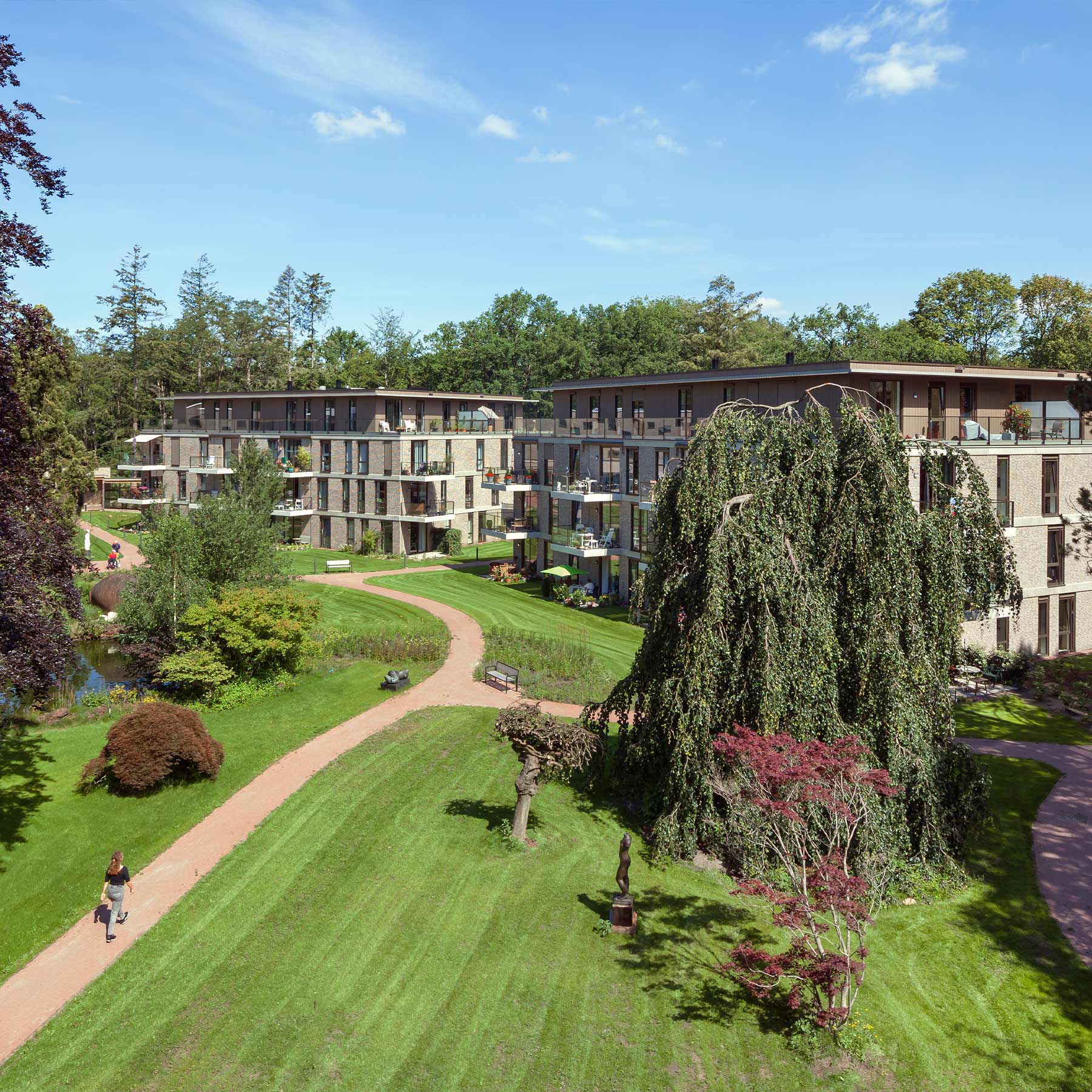 i
i
The Rosa Spier House offers elderly artists a place where they can continue their familiar work and life for as long as possible, under the motto ‘art for life‘. Even when (intensive) care is required. The 137 apartments, ateliers, exhibition space, theatre, and restaurant are arranged around a beautiful garden. In this warm and personal environment, artists can continue to work creatively until late in life and stay healthy for as long as possible. For many years, EGM has been designing residential care combinations based on the vision of keeping older people actively involved in society, which benefits their health and well-being.
Rosa Spier House
2019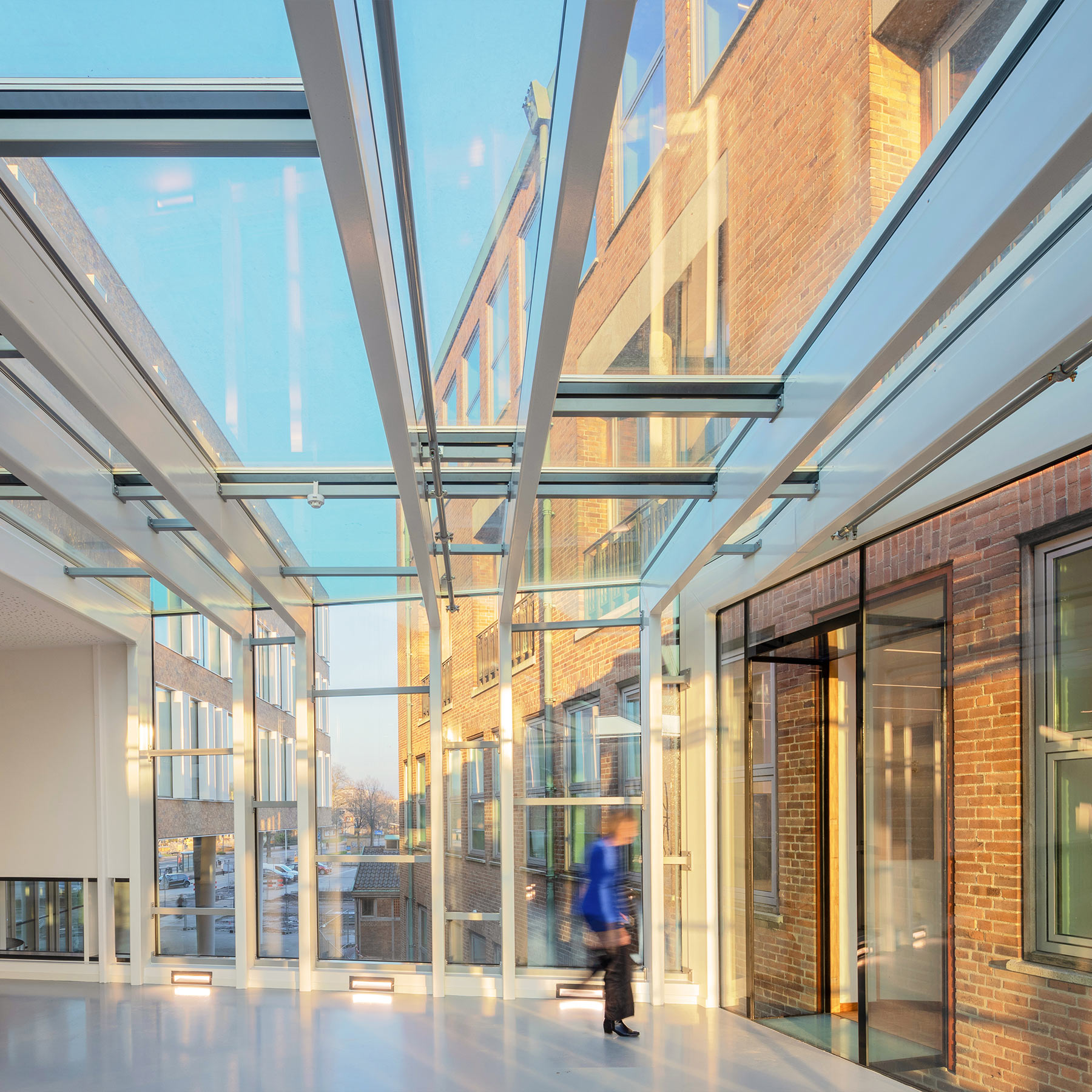 i
i
The Town Hall in Hengelo has become a true landmark of the city, thanks to the input and cooperation of local officials and residents. EGM’s goal has always been to make social buildings accessible and approachable for everyone. The Town Hall is such a place: a recognisable beacon for all residents. The design involves the transformation of a national heritage monument and a new city office. This sustainable ensemble makes use of restored furniture, local cradle-to-cradle materials, demountable built-ins, solar panels, sedum roofs, and energy-efficient systems. The result is a truly healthy building with a Hengelo identity, in which it is pleasant to work.
Hengelo Town Hall
2020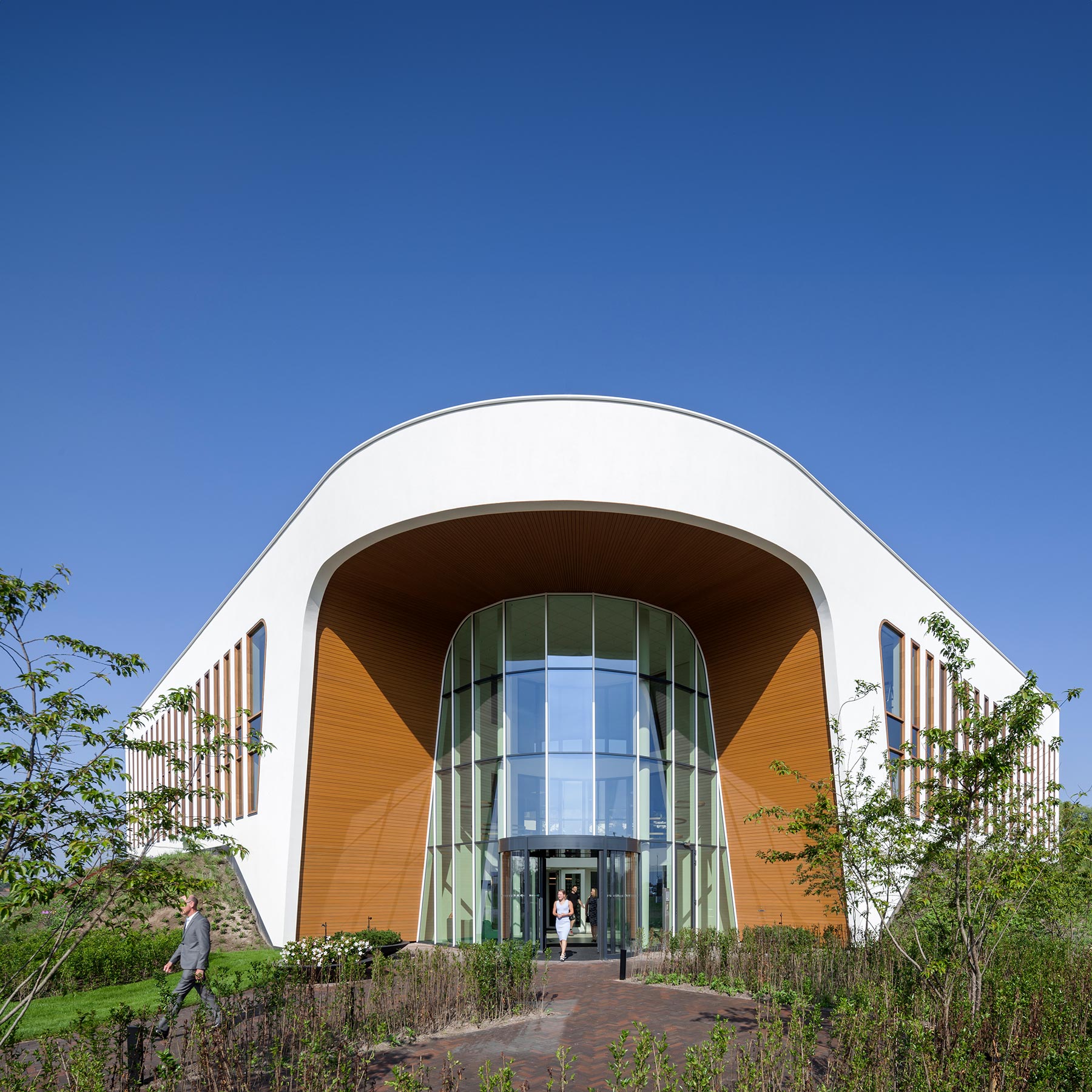 i
i
North Holland Eye Centre is a centre of expertiese that stands for high-quality and accessible care. The centre is highly sustainable and designed with biophilic thinking in mind. The patio garden at the heart of the centre, full of flowers and trees, offers numerous health benefits. The Eye Centre is exemplary of the high quality of compact healthcare buildings that EGM delivers, where craftsmanship and experience from large-scale projects come together at their best. Other examples include the Drive-in Operating Theatre complex, the Orthopaedic Centre Zoetermeer, the Treatment Centre Voorburg, and the Infectious Diseases Building in Nijmegen. These buildings combine a powerful identity with accessible, friendly care close to home.
North Holland Eye Centre
2020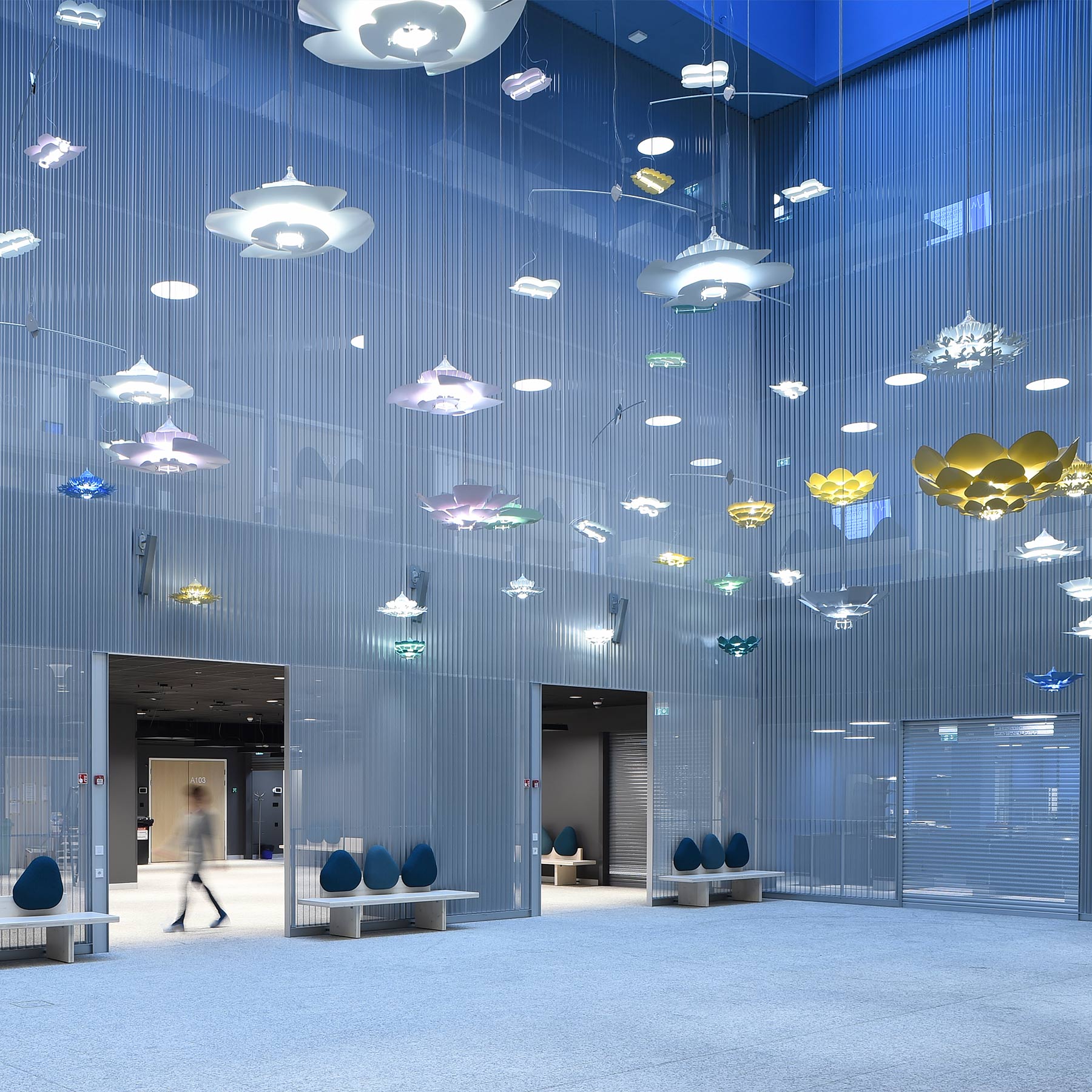 i
i
Jyväskylä is home to the first entirely new hospital in Finland since the 1970s, designed by EGM in collaboration with the Finnish firm JKMM. The hospital serves a region of approximately 41,000 km² (nearly the size of the Netherlands) and was designed from the patient’s perspective: their journey, thoughts, and emotional experience were at the heart of the design. With abundant art, special materials, colours, and spaces, a hospital has been created that is almost unrecognisable as such. Hospital Nova demonstrates how EGM can deploy its high-quality knowledge in hospital design internationally. Through this expertise export, the firm realises collaborative international projects, the office realises international projects in partnership, such as recently in Bratislava, Curaçao and Indonesia.
Hospital Nova, Finland
2021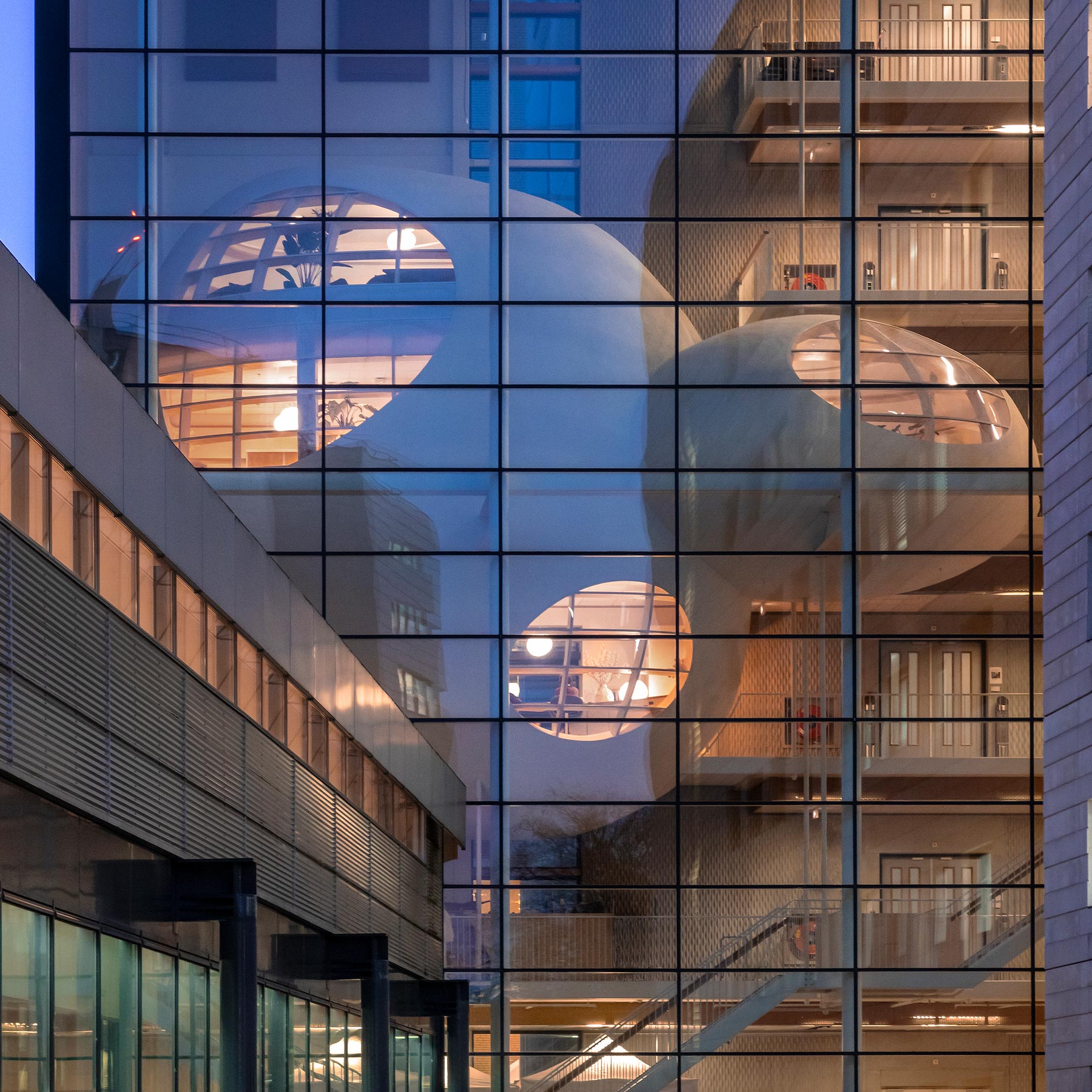 i
i
Children who stay in hospital for extended periods of time, just like their families and friends, need relaxation and distraction. The floating ‘pebbles’ look futuristic and stimulate the senses. It is the round shapes and playful interior that create a comfortable, warm space where families can retreat, away from the hospital environment. The Living Room significantly contributes to the wellbeing and recovery of the children and has been praised by the director as the most beautiful Ronald McDonald Living Room in Europe.
Ronald McDonald Family Room
2021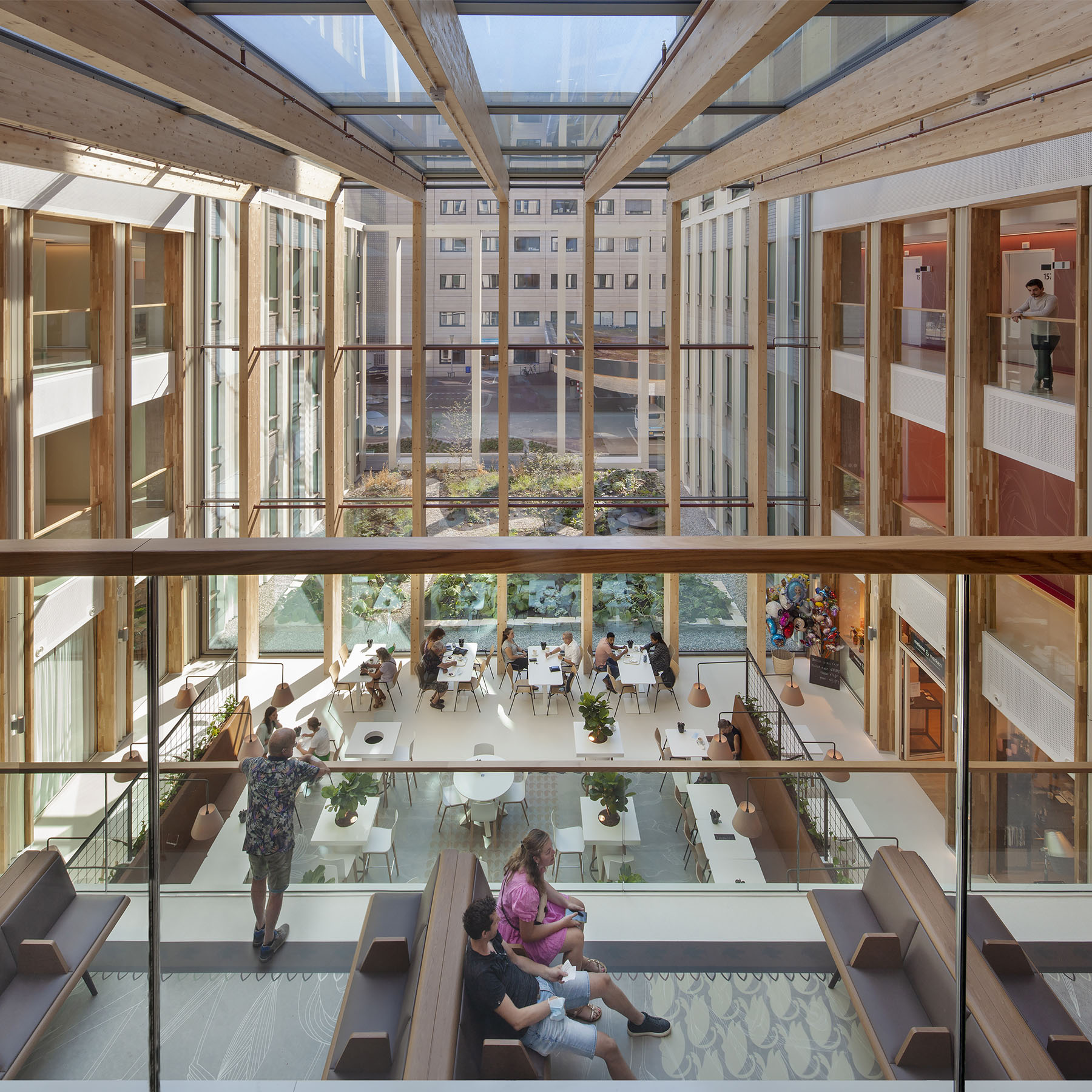 i
i
Labelled as the most sustainable hospital in Western Europe (BREEAM Excellent), the new Main Building welcomes visitors in a warm and inviting way. Thanks to the use of plenty of daylight, expansive views, many vistas, and biophilic design featuring living greenery, there is a healthy care environment for patients, staff, and students. With the commissioning and dismantling of vacant buildings, the green healthcare campus, designed by EGM 30 years ago, is now completed. The building has won awards for both its architecture and its innovative healthcare delivery.
Radboudumc Main building
2022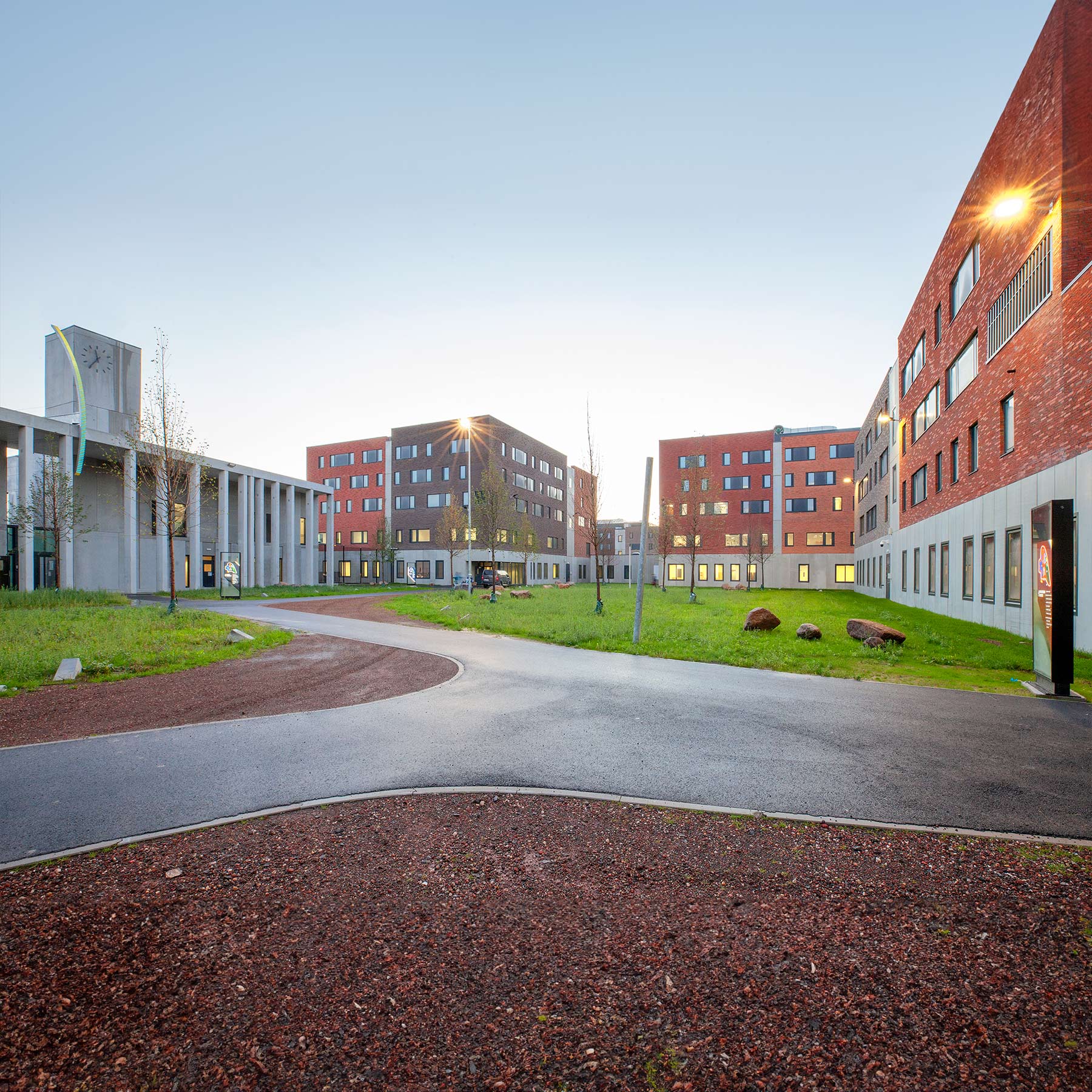 i
i
In Belgium’s largest prison, the latest societal insights on incarceration and reintegration have been incorporated. The innovative design is sustainable, BREEAM Very Good, and follows the layout of a village: a central square surrounded by streets leading to various buildings. These buildings are designed to blend in with the surrounding villages in terms of scale, materials, and colours. Life within the walls is made as similar as possible to life outside. This improves the chances of successful reintegration and a reduction in recidivism rates.
Haren Prison Village, Belgium
2023 i
i
The historic Fenixloods II in Rotterdam’s vibrant Katendrecht district has been transformed into FENIX Museum—a cultural hub inspired by global migration stories. Its striking viewpoint, the Tornado, was designed by MAD Architects. As co-architect, EGM developed the full architectural design for the project. FENIX is the third scheme on the peninsula for which EGM has provided the detailed design, following Cultuurcluster Fenix I and the De Groene Kaap residential complex.
FENIX museum
2025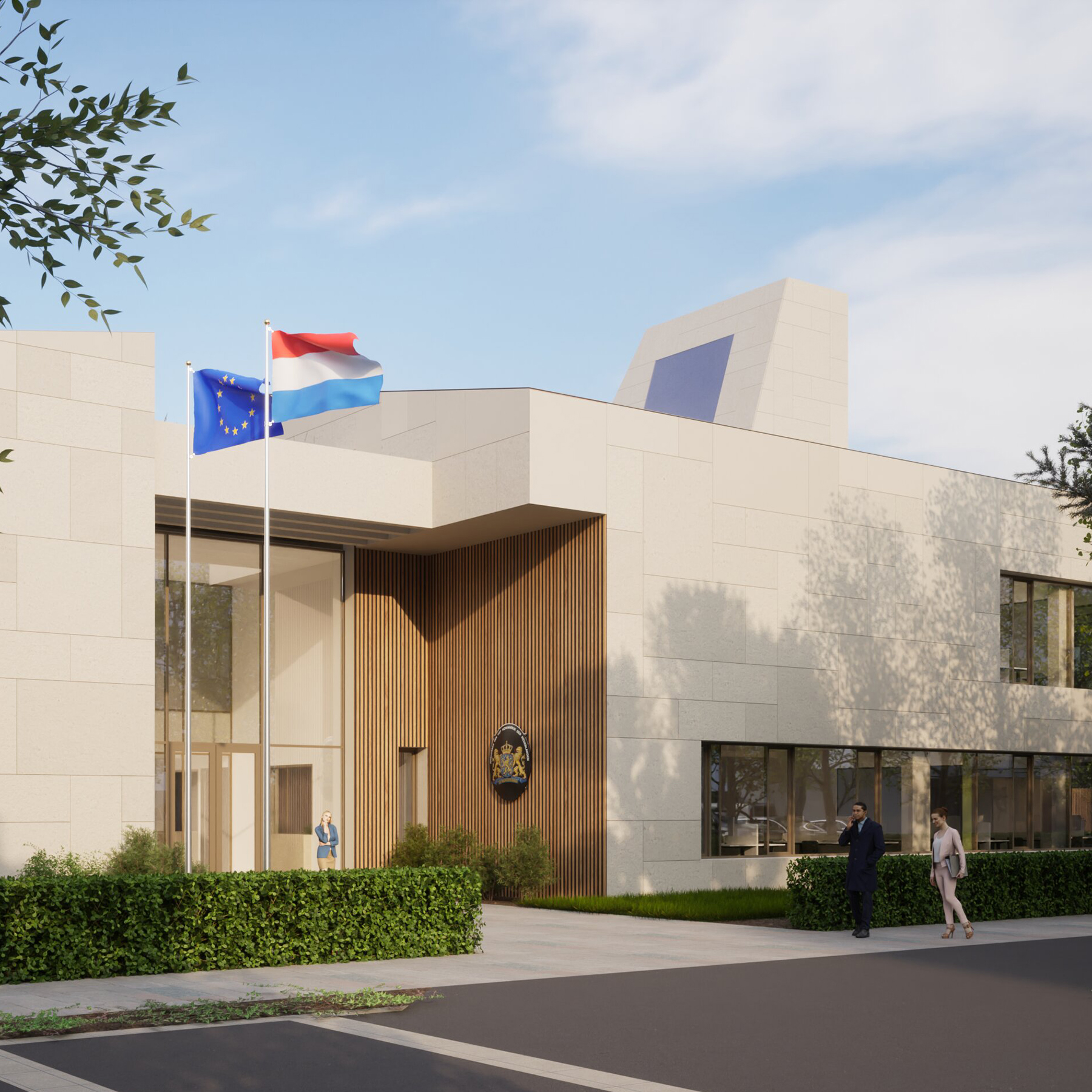 i
i
The embassy in Turkey (Ankara) is the first newly built Dutch embassy in 15 years. It will be Netherlands’ first BREEAM Excellent embassy thanks to its all-electric concept and a fully solar-powered roof. The new building emphasises the Netherlands as a welcoming nation with an open attitude, despite global tensions. In recent years, EGM has completed dozens of small and large projects for the Ministry of Foreign Affairs. EGM’s approach and expertise align well with the complexity of these assignments, the sensitive social and political context, and the prominence of the buildings.
Dutch embassy Türkiye
2026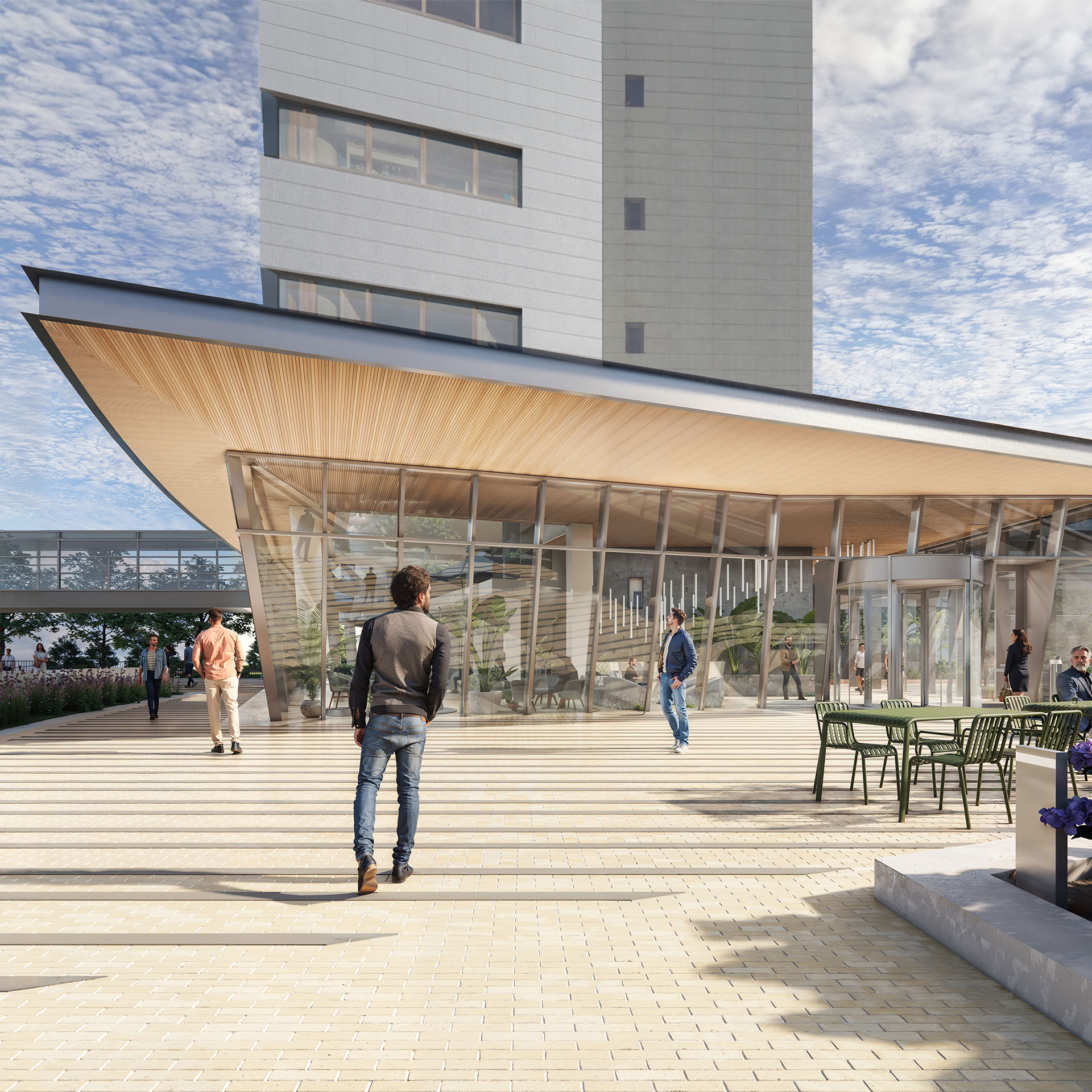 i
i
The new entrance pavilion of the Radboudumc’s Researchtower is an eye-catcher in the heart of the campus. It makes the central square accessible and lively from all directions. Beneath the entrance are the new Central Sterilisation Department and Central Scope Disinfection. This renovation and the redesign of the square are part of EGM and Radboudumc’s Master Plan. This plan focuses on reorganising the campus, creating clear connections between healthcare, education and research. The recently opened Main Building and Experience Centre and the new green park-like landscape are also part of this compact green campus.
Entrance pavilion Research tower
2026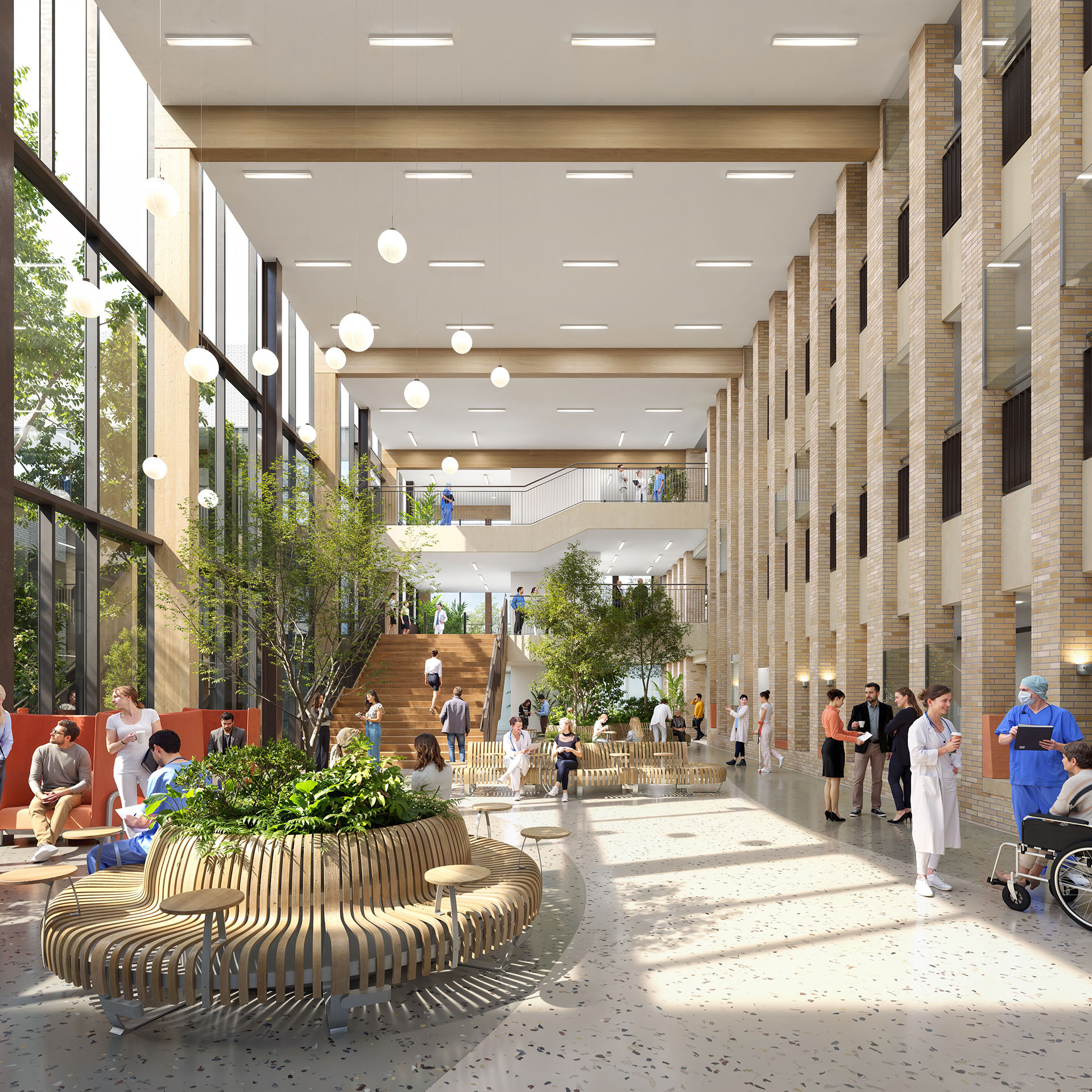 i
i
Together with MCL, EGM developed the Strategic Master Plan for Housing. This plan supports MCL’s ambition to gradually work towards a CO2-neutral hospital, in line with the Paris Proof objectives. During construction and renovations, the new hospital remains adaptable to respond to the changing demand for healthcare. The new hospital is sustainable and promotes the well-being and health of both patients and staff based on the principles of BREEAM, WELL and Healing Environment. Phase 1 is already underway, with the day treatment center, Intensive Care and surgery complex to be opened by 2026.
Medical Centre Leeuwarden
2026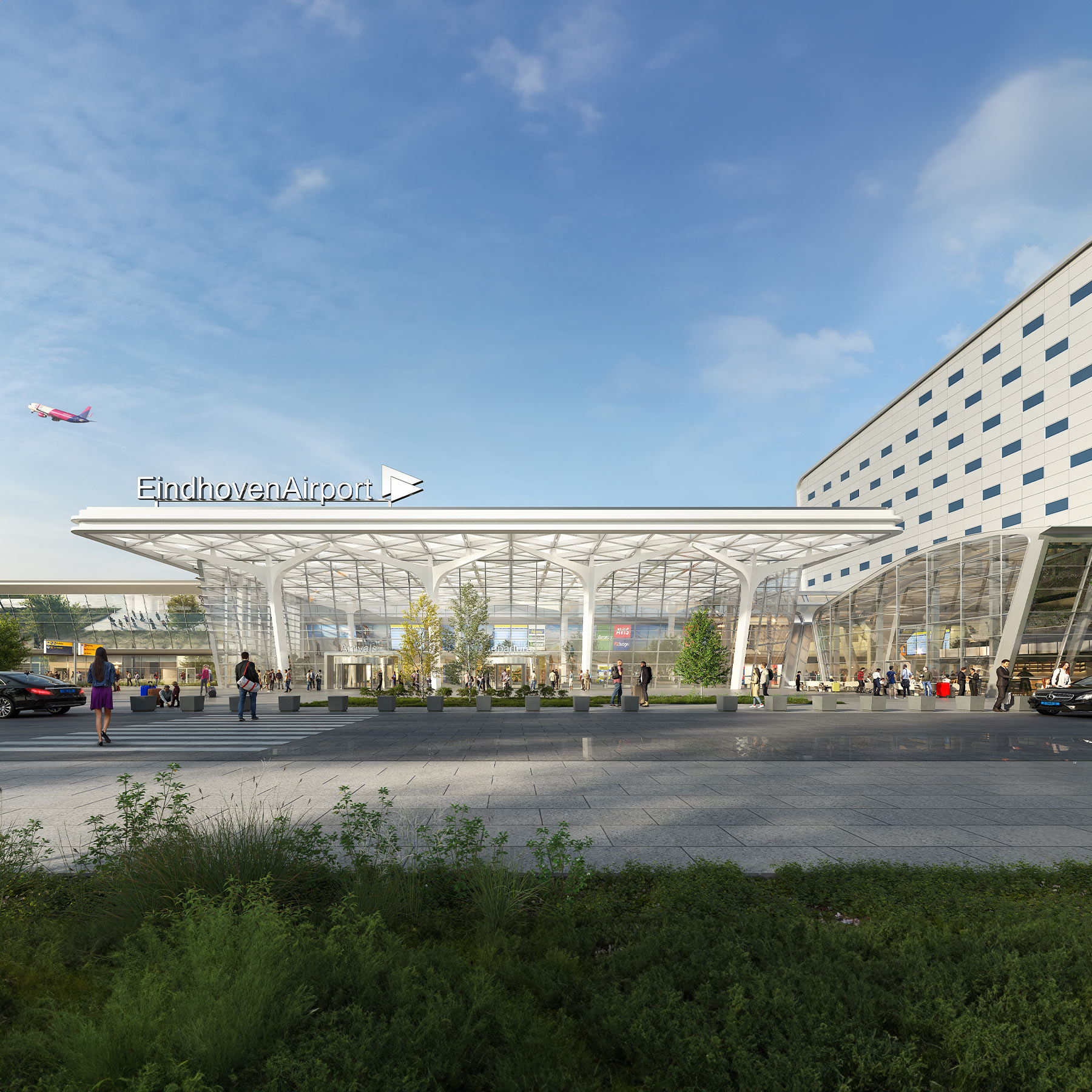 i
i
Eindhoven Airport is expanding its terminal to improve comfort and service for passengers and staff. The design strongly focuses on a sustainable expansion: the building will be gas-free, generate its own energy, feature wooden columns, use recycled materials, have solar panels on the roof, and include a water collection system for the greywater circuit. The open, light structure of the terminal welcomes passengers and will have an iconic look. EGM, which previously worked on Rotterdam The Hague Airport and Schiphol Airport, takes the next step in its mobility portfolio with this expansion.
